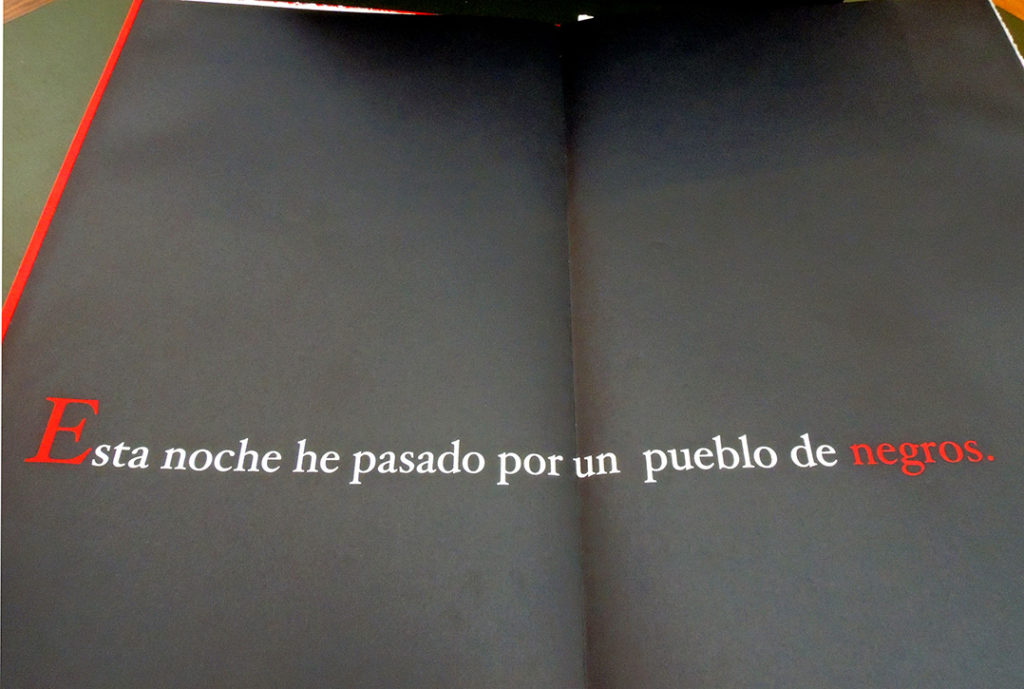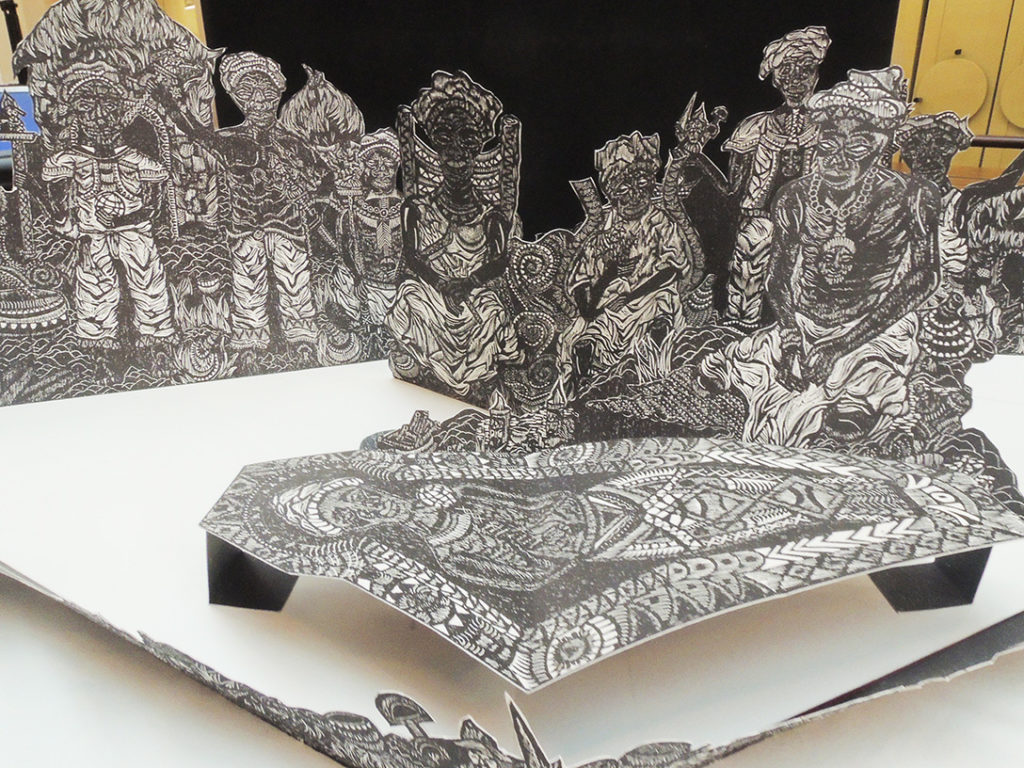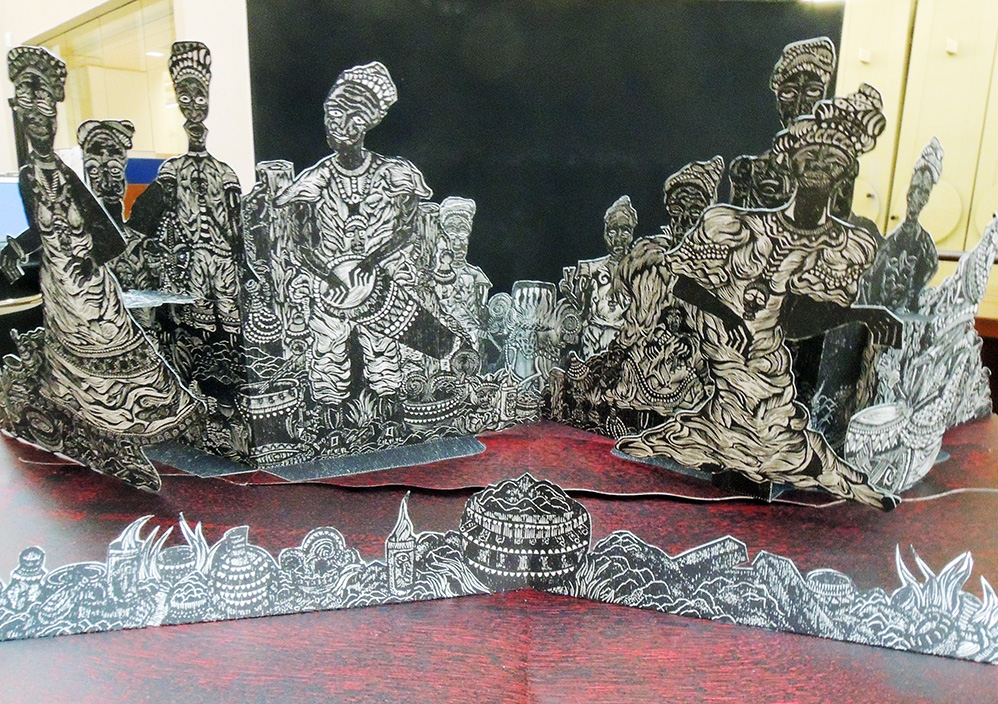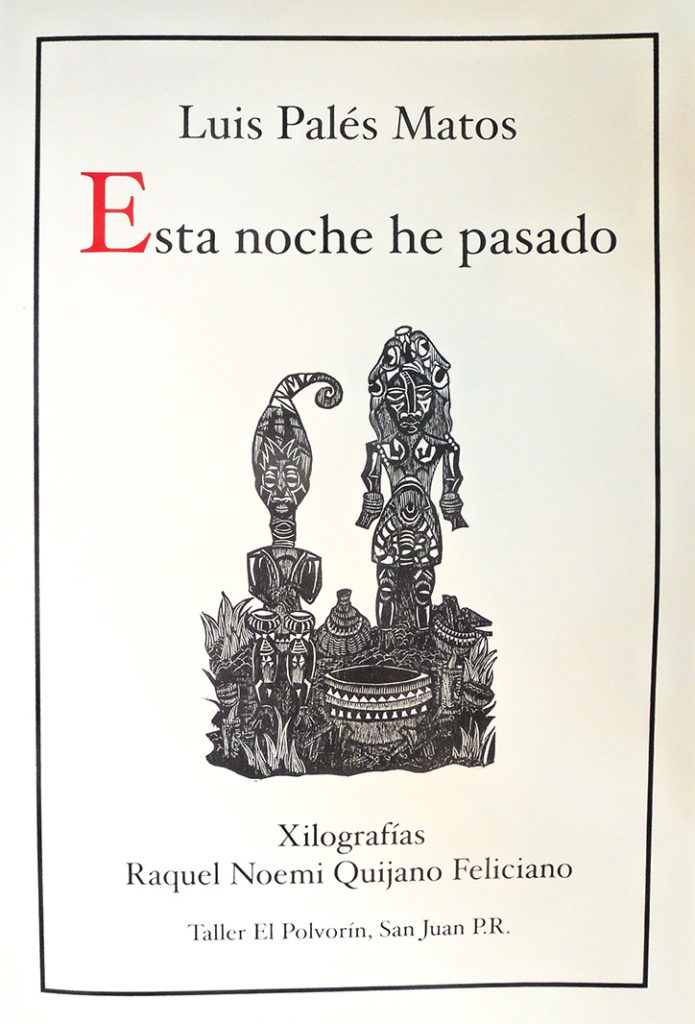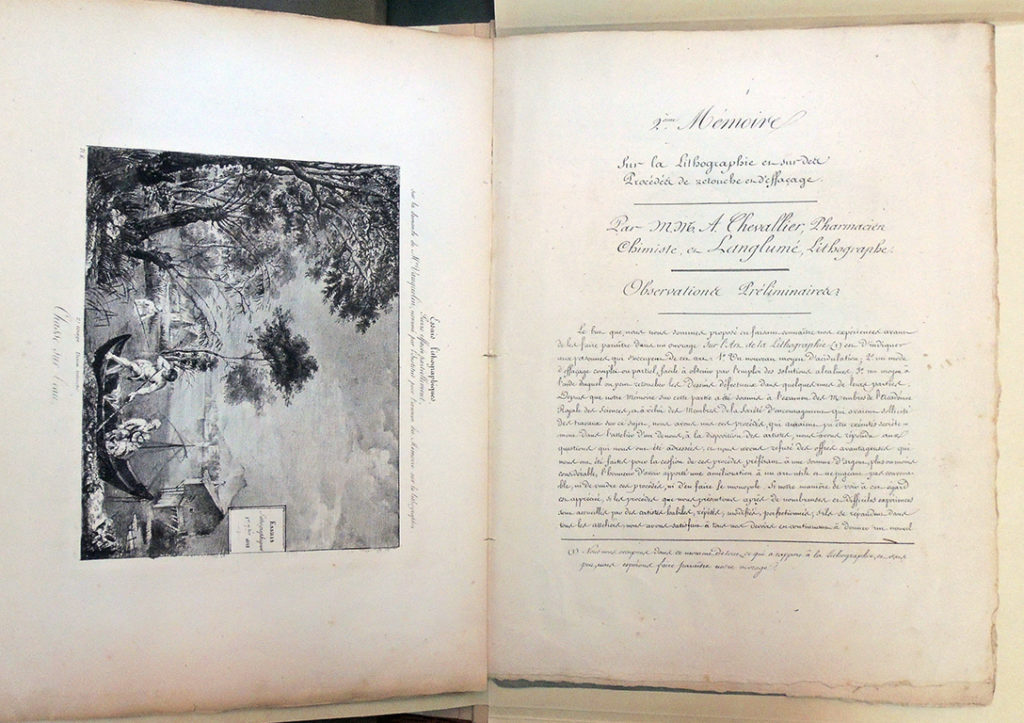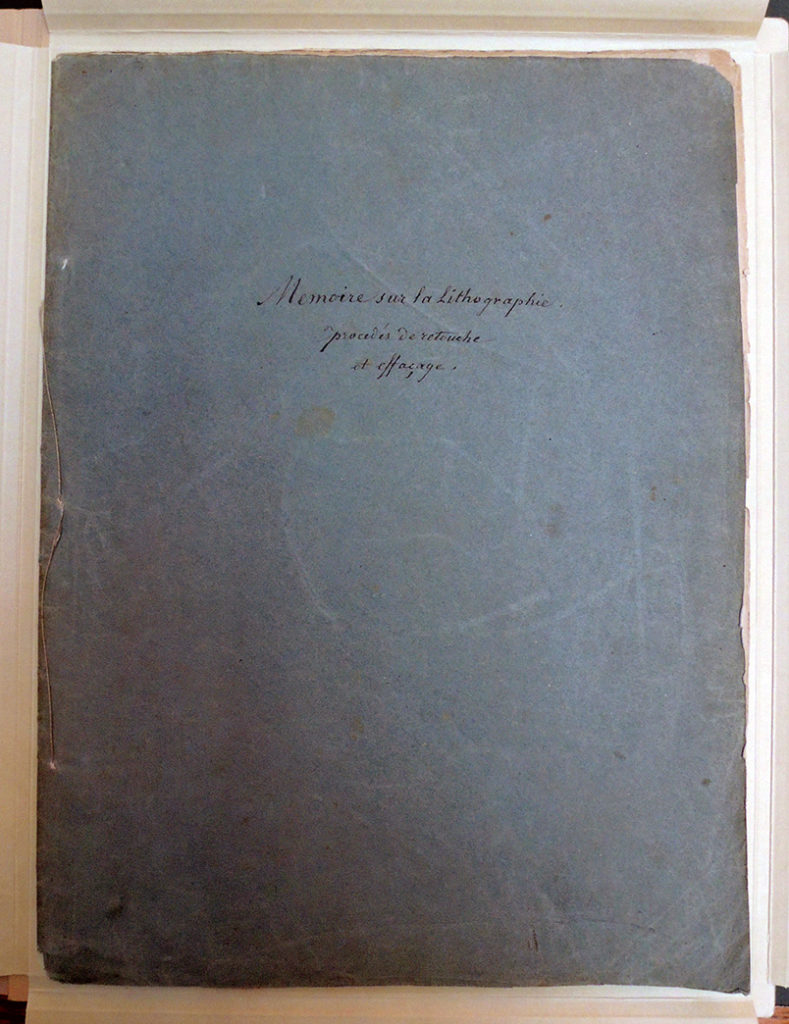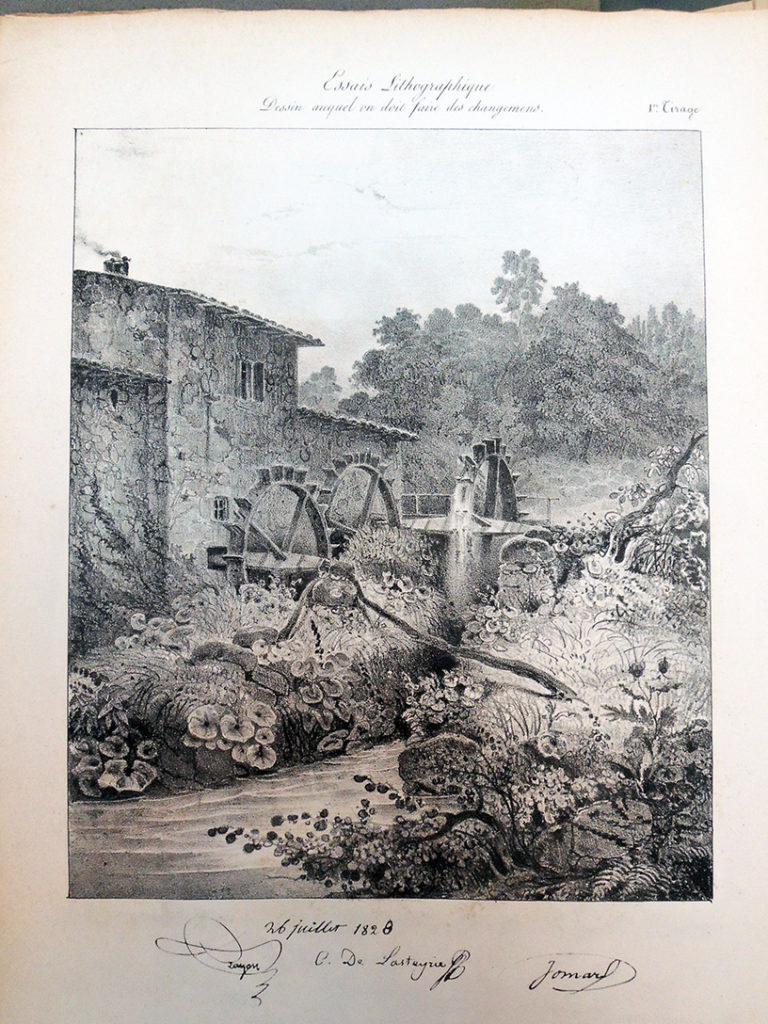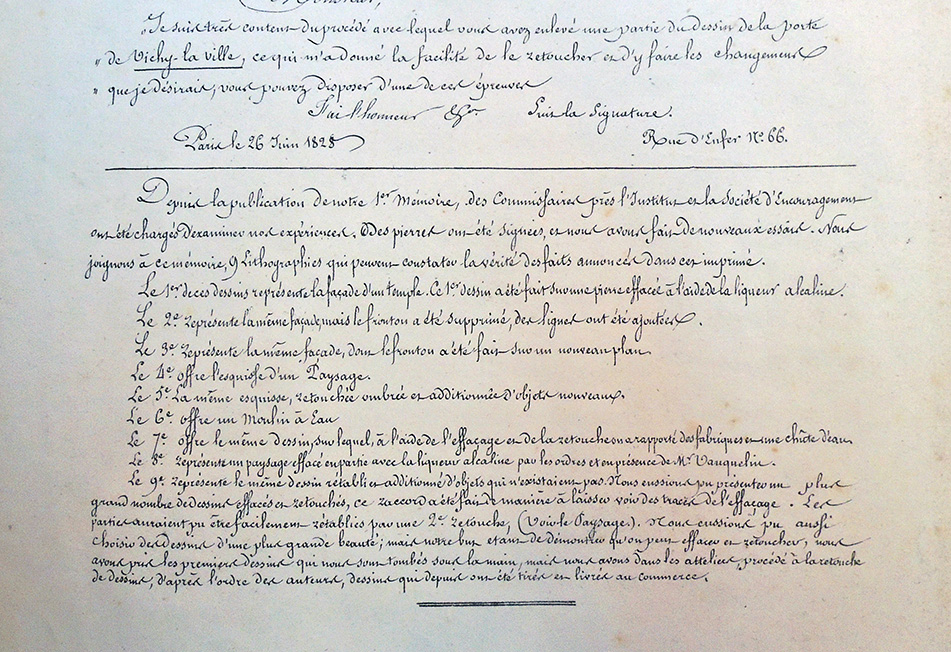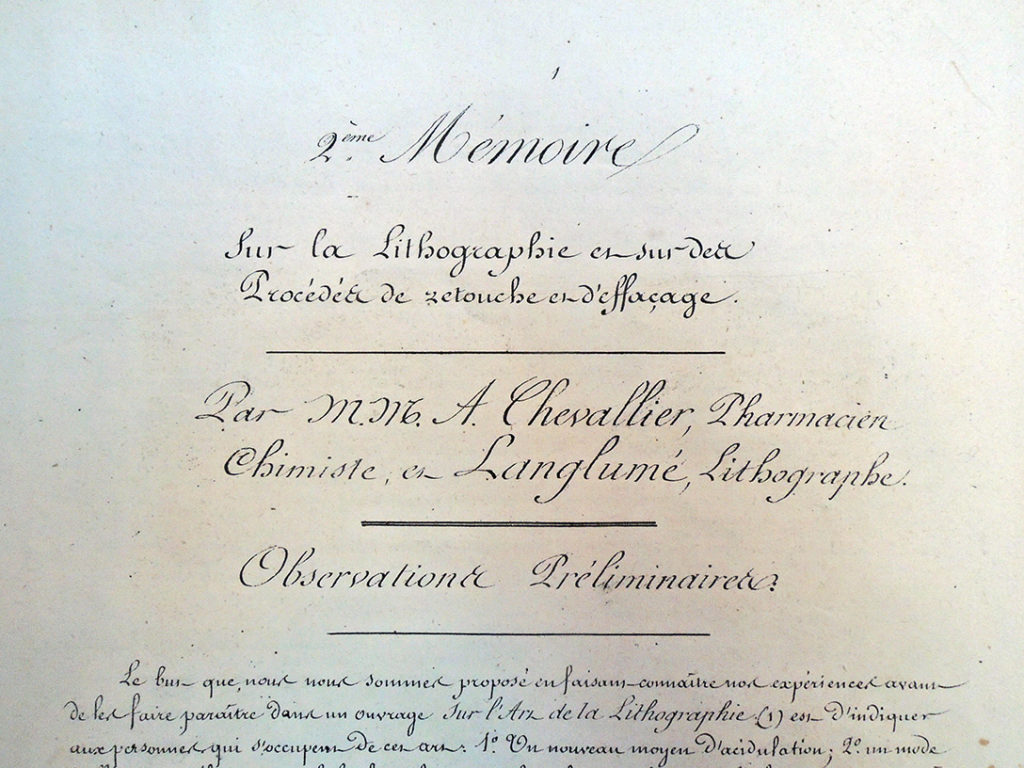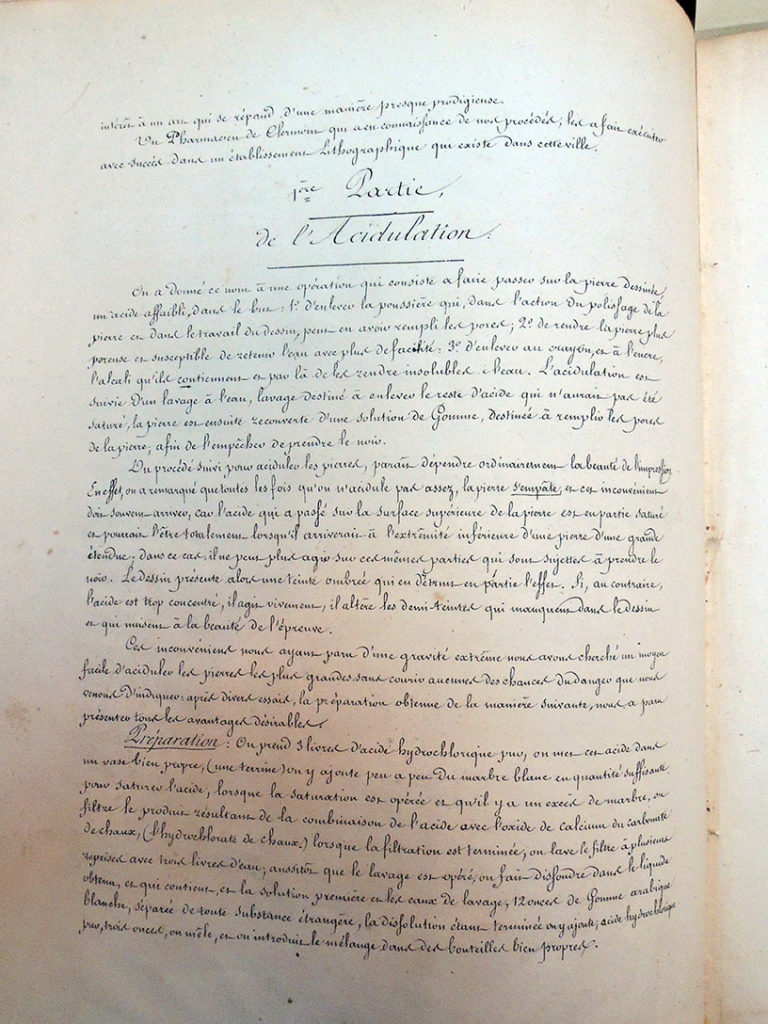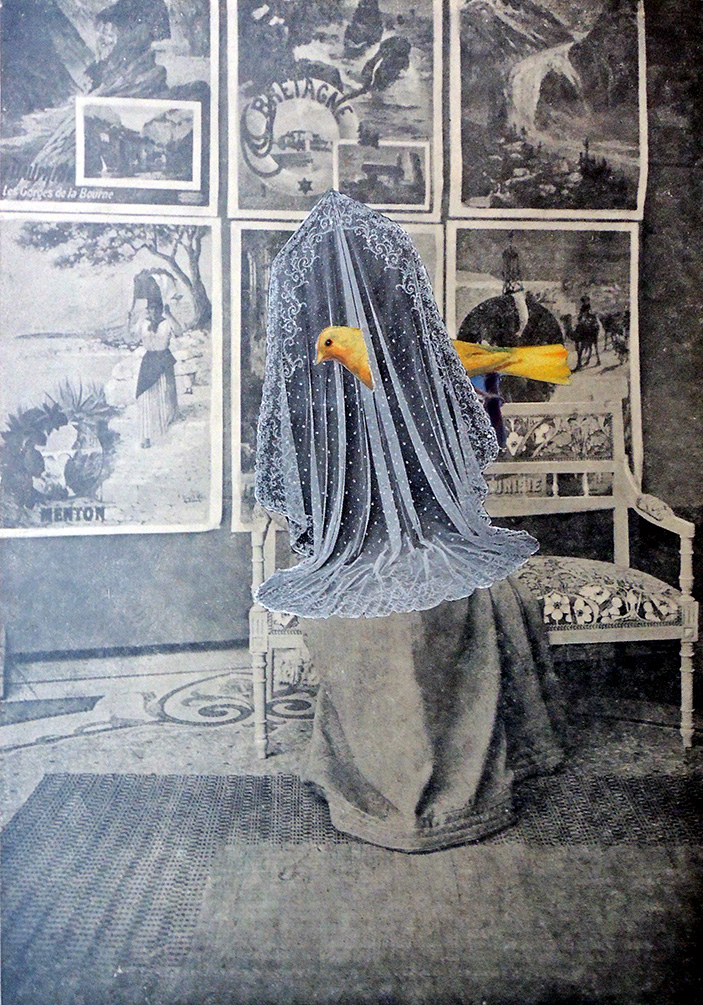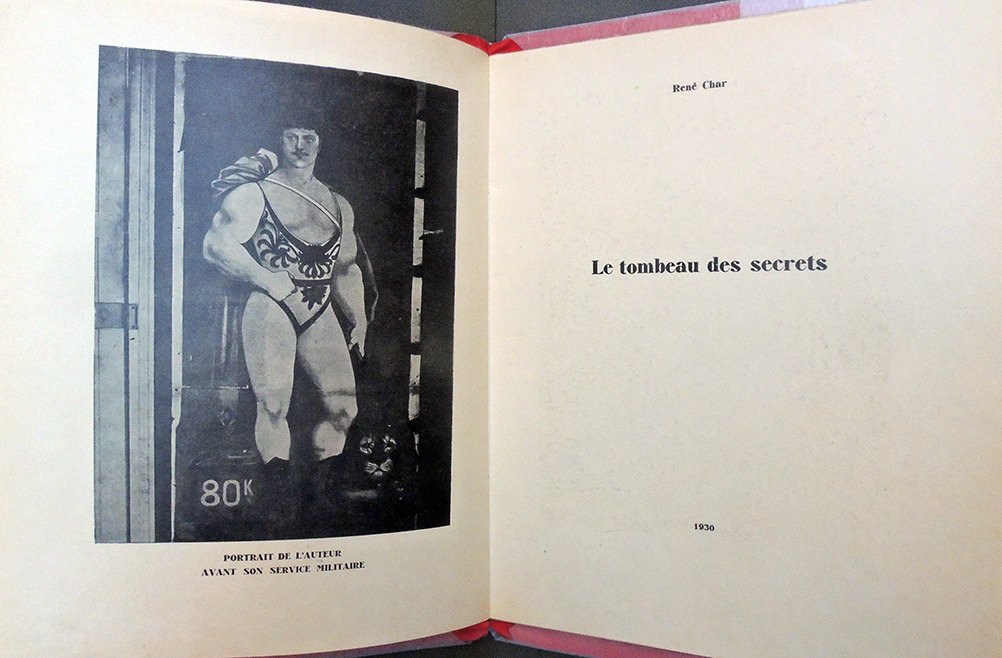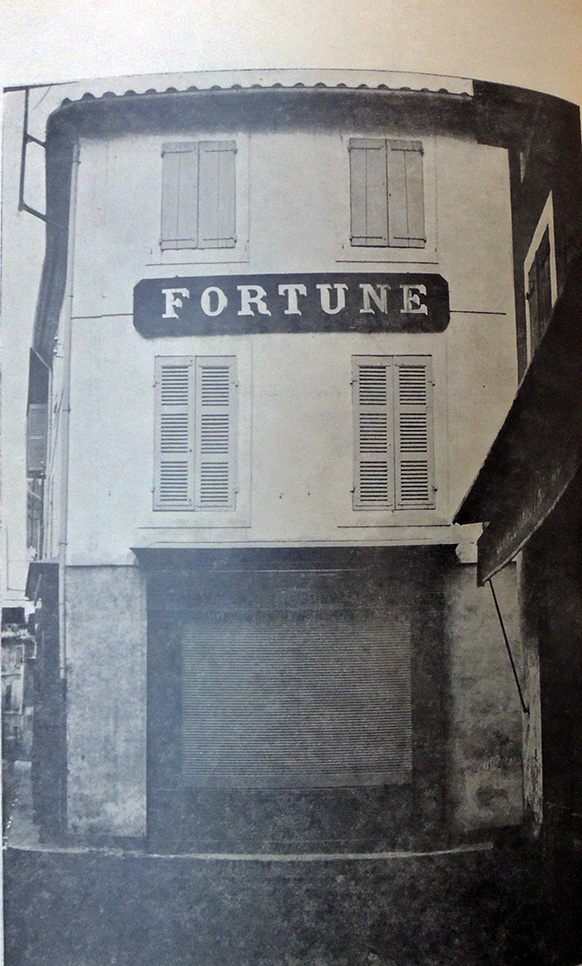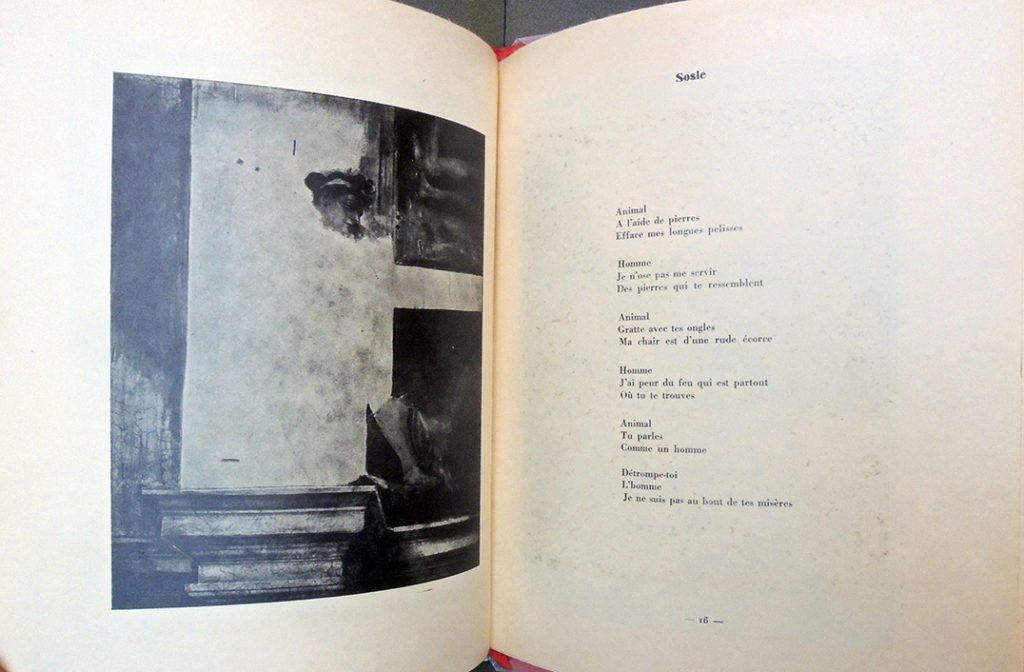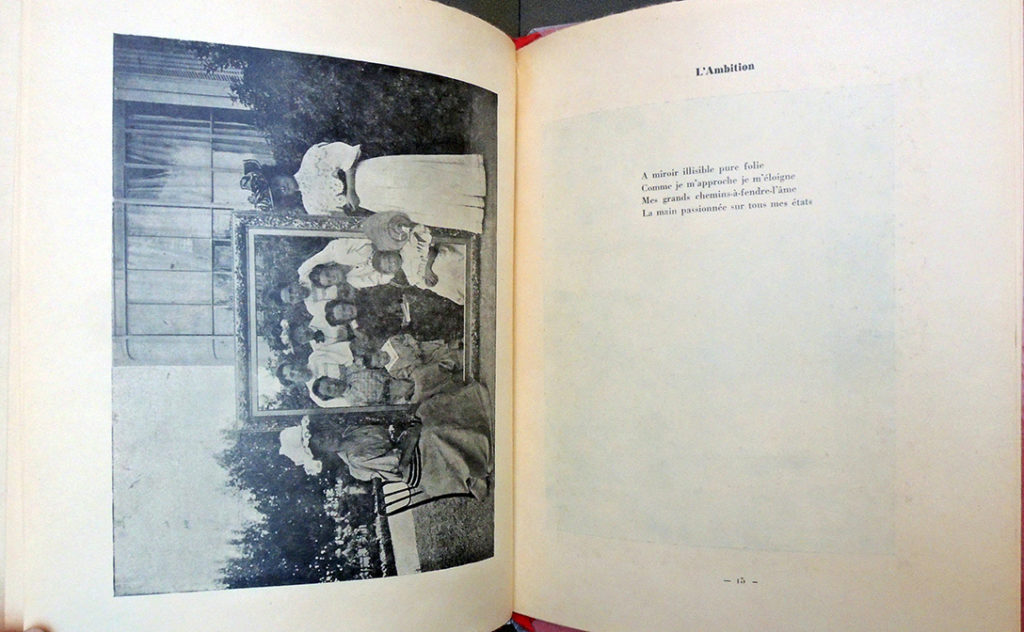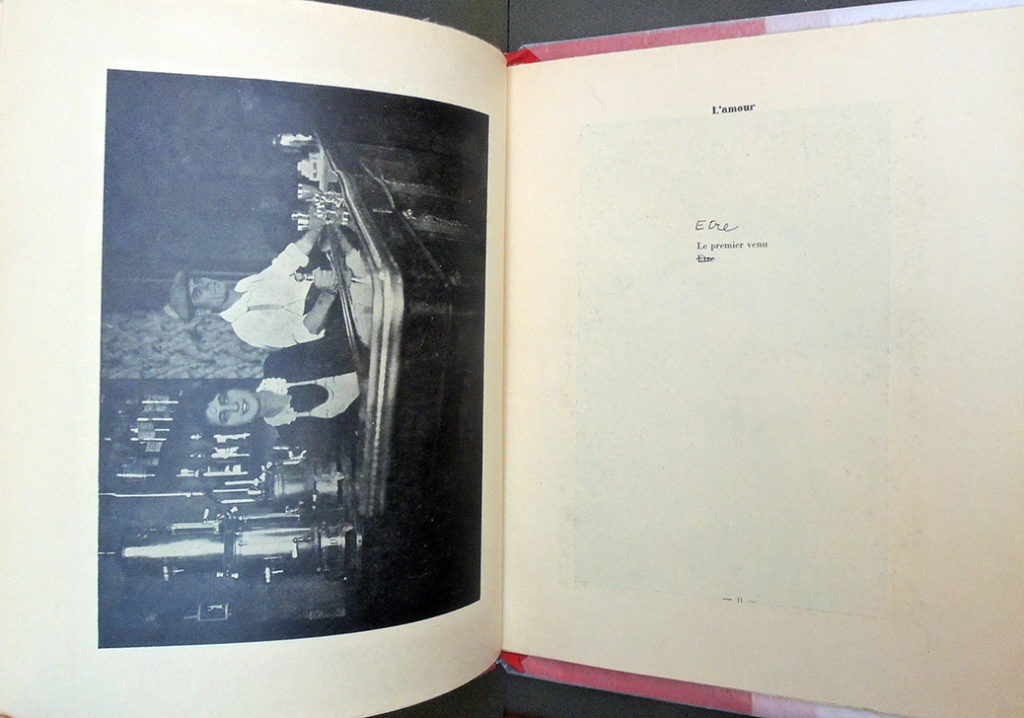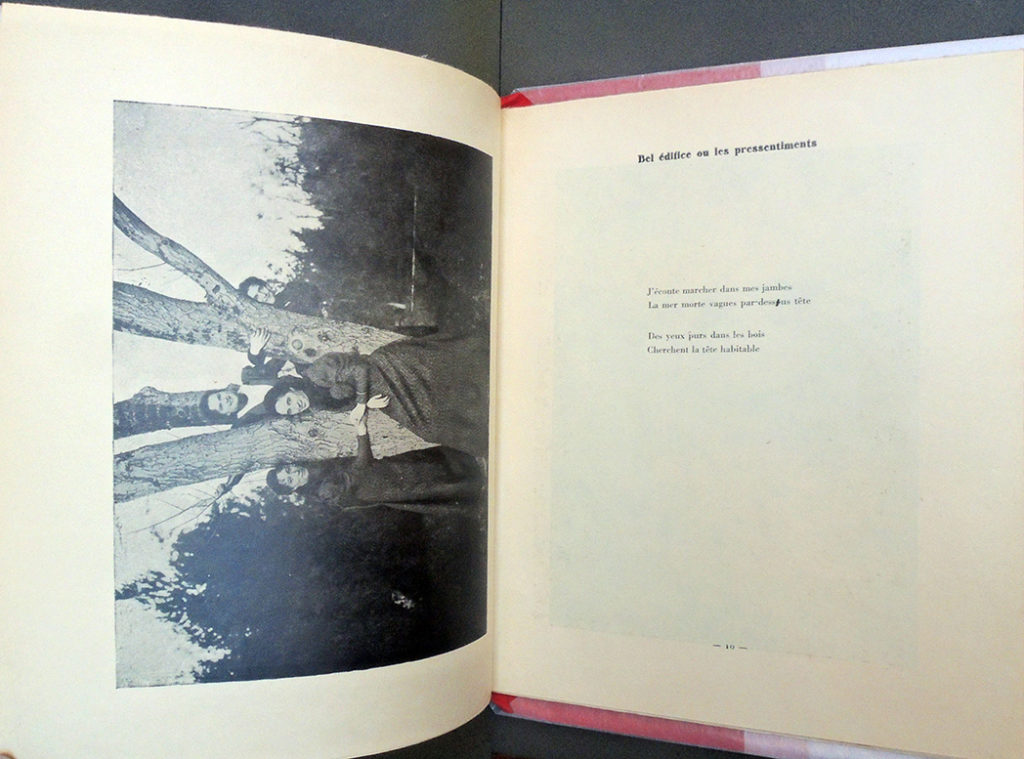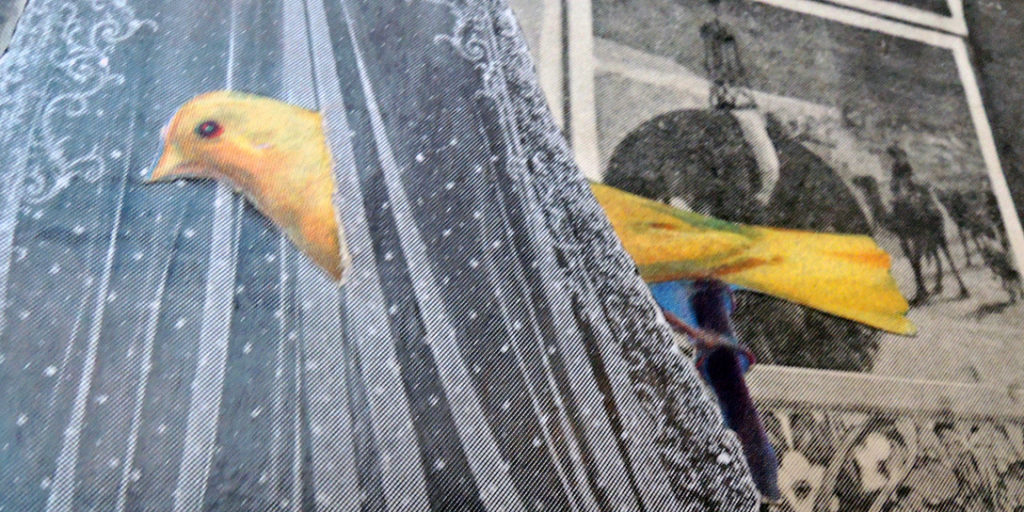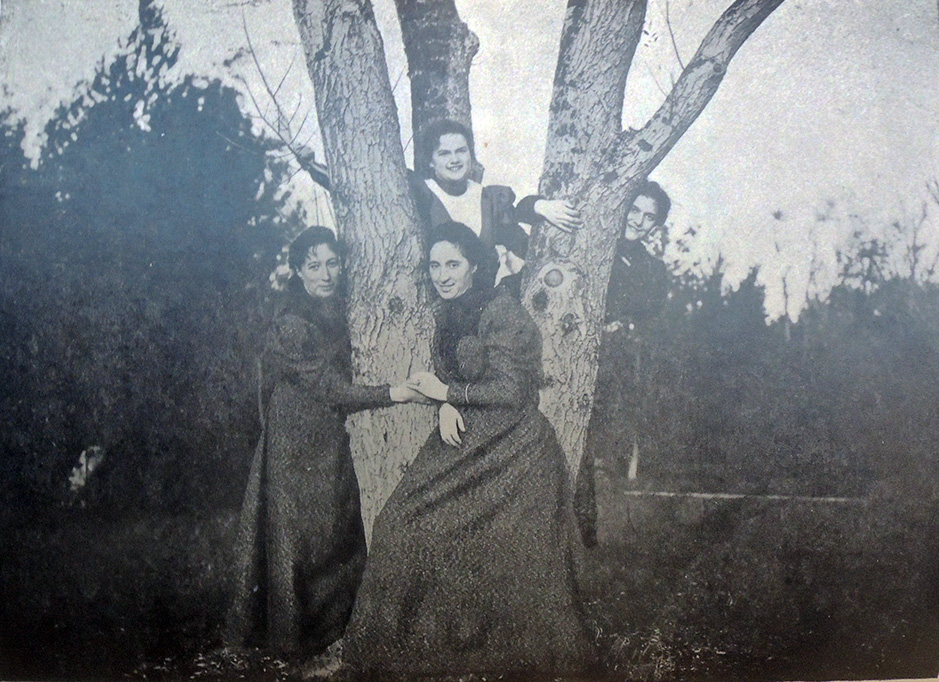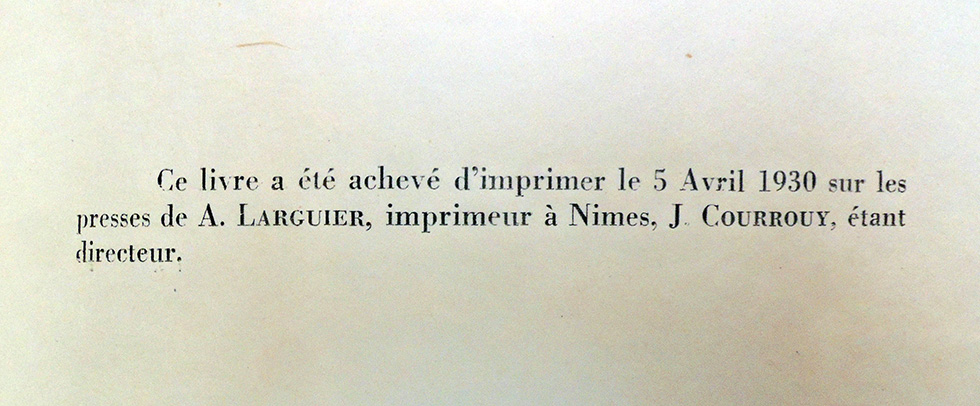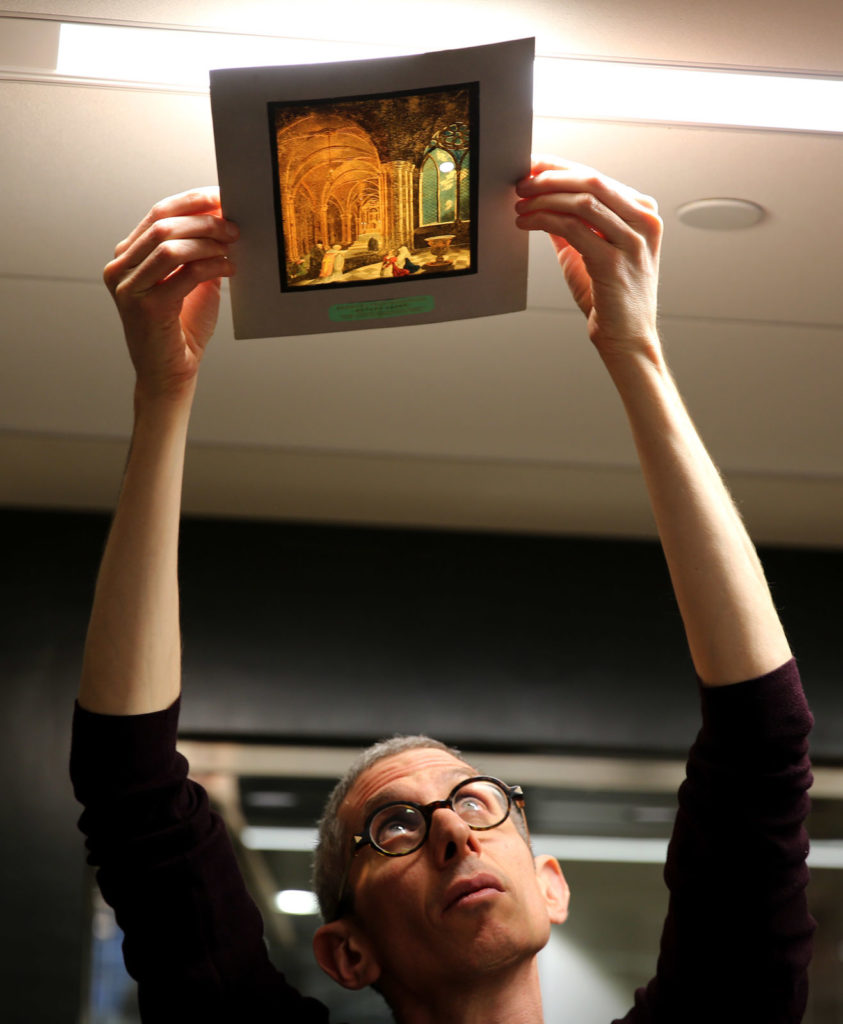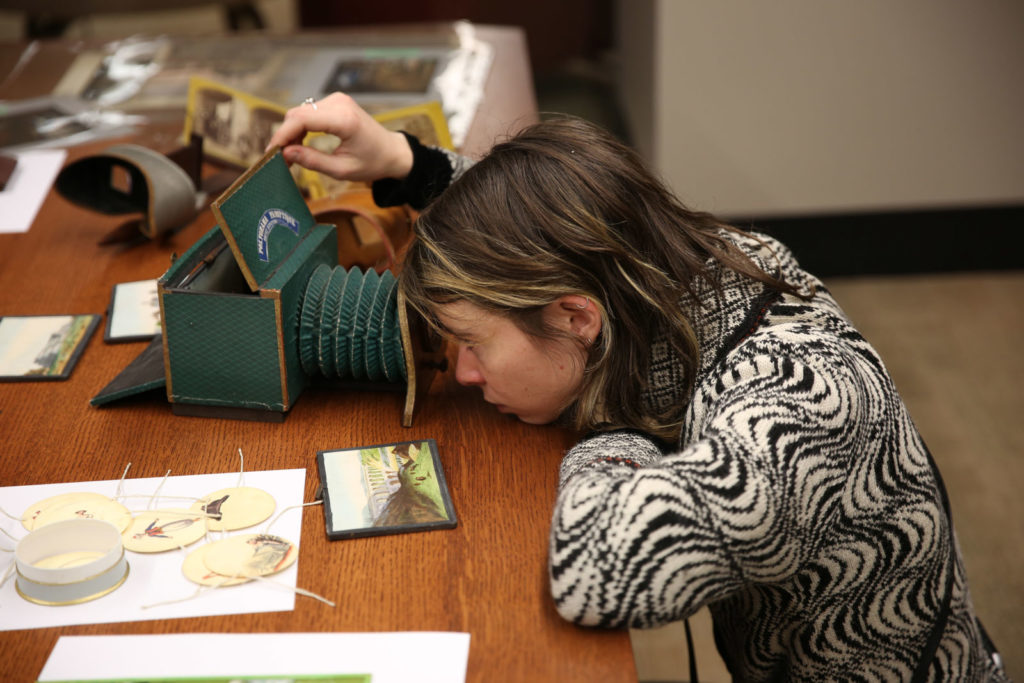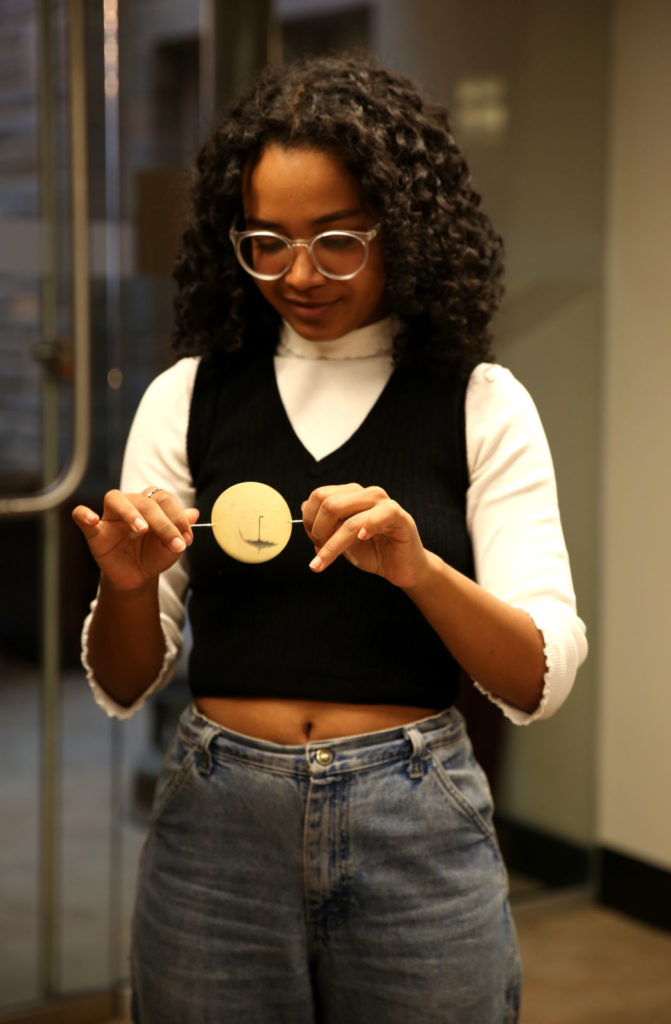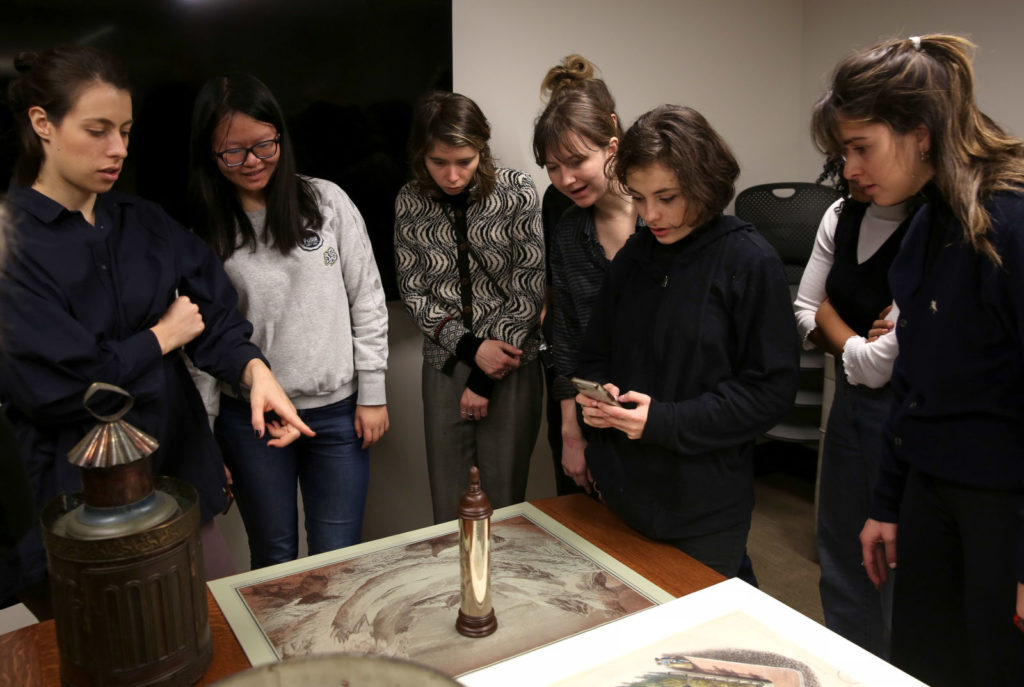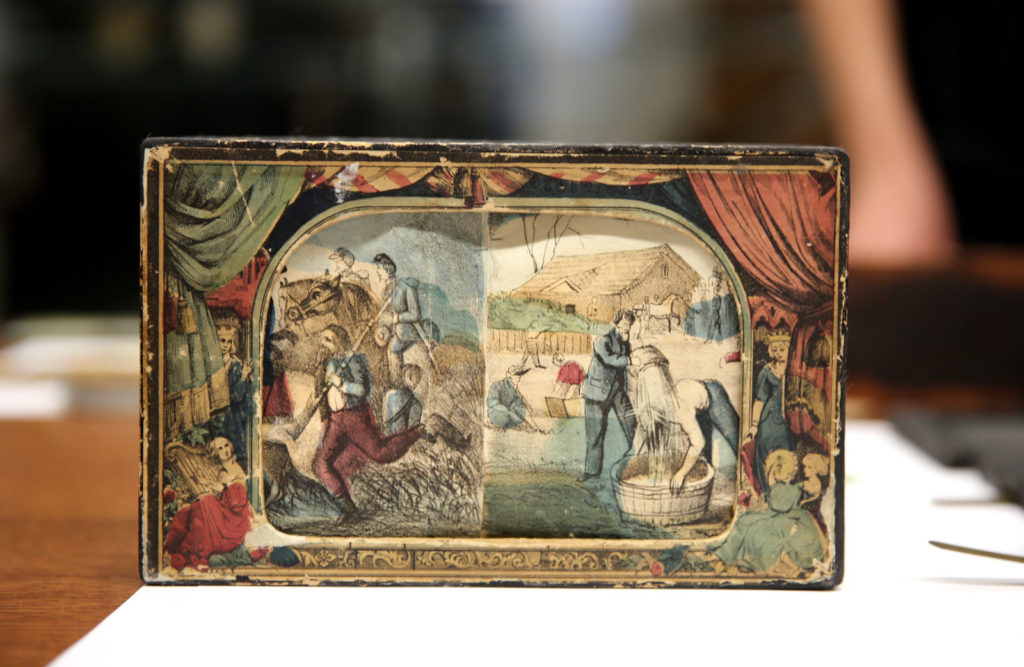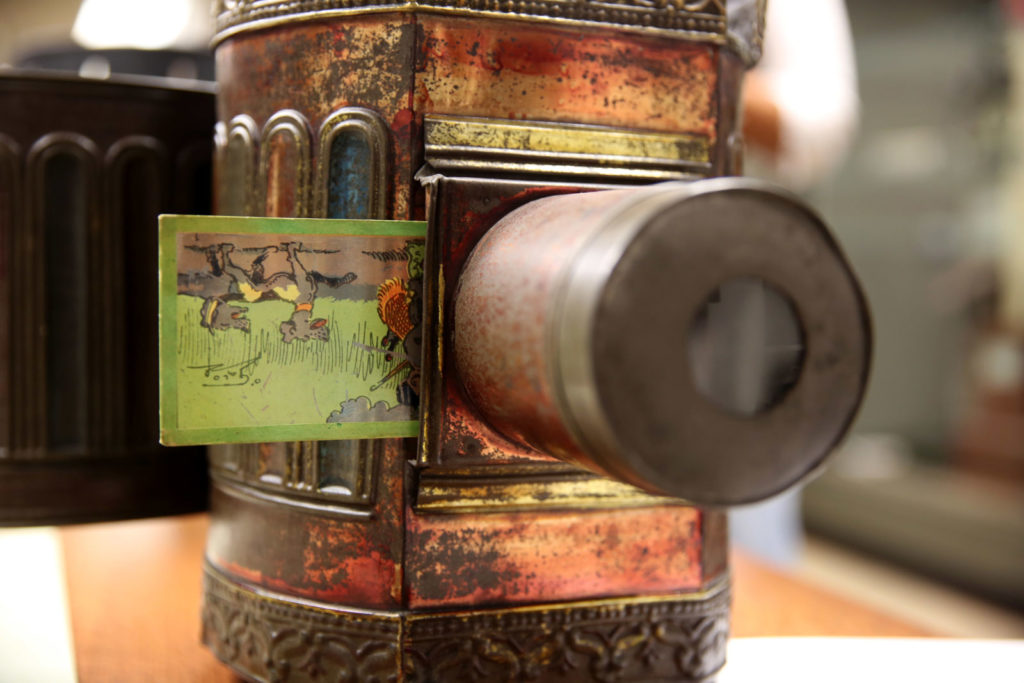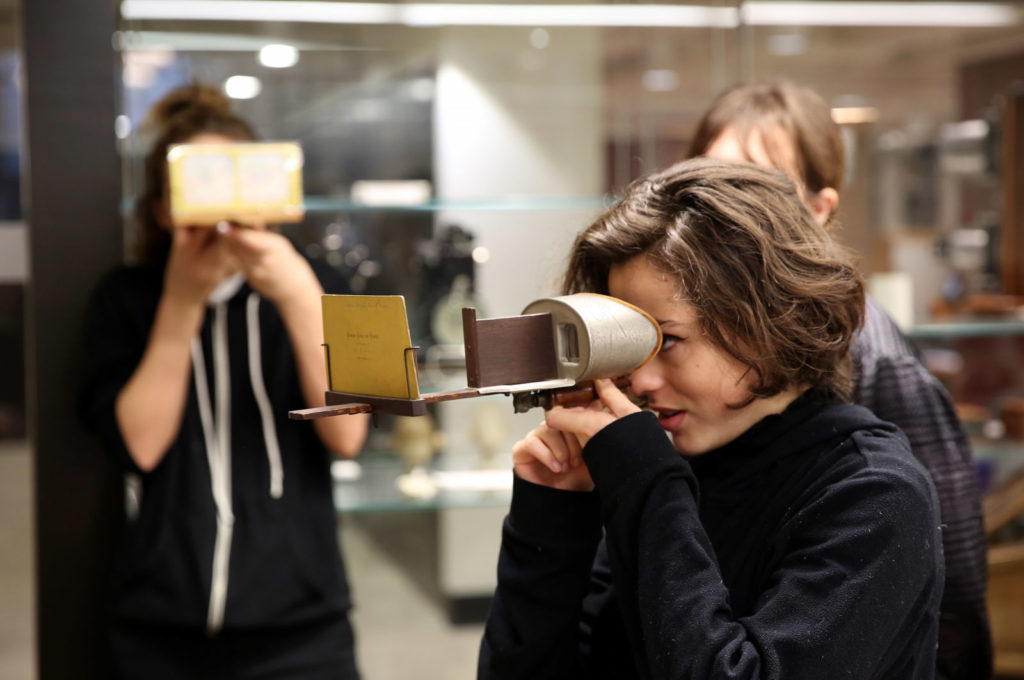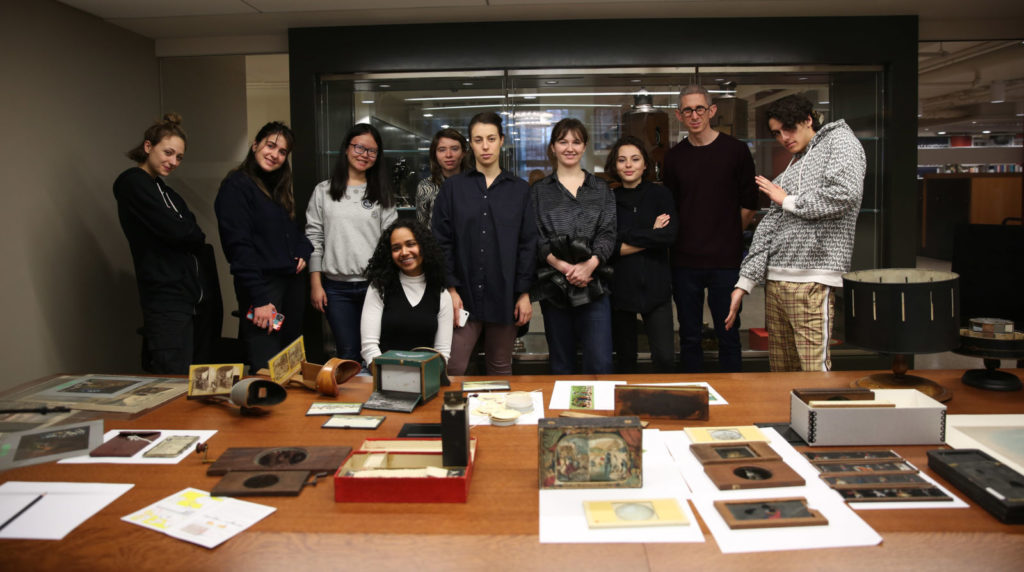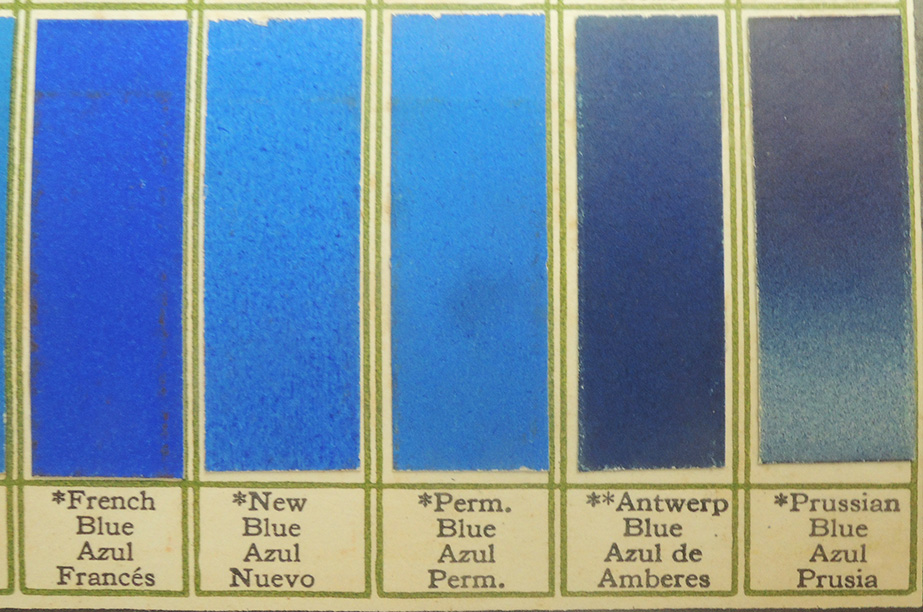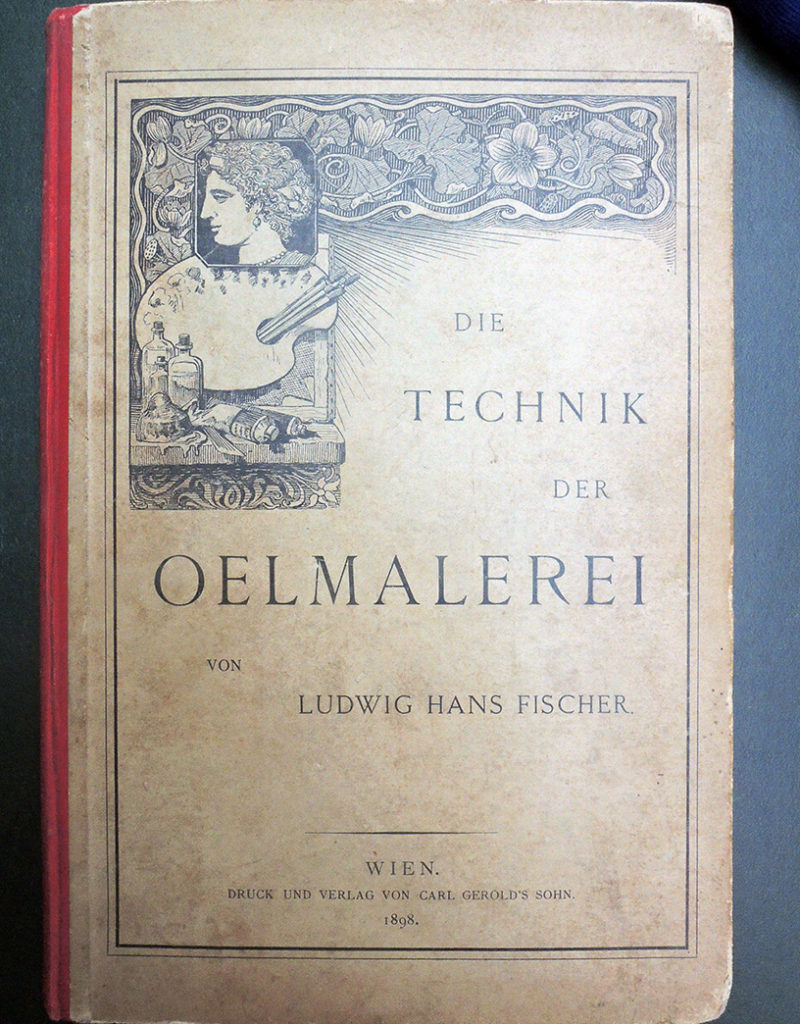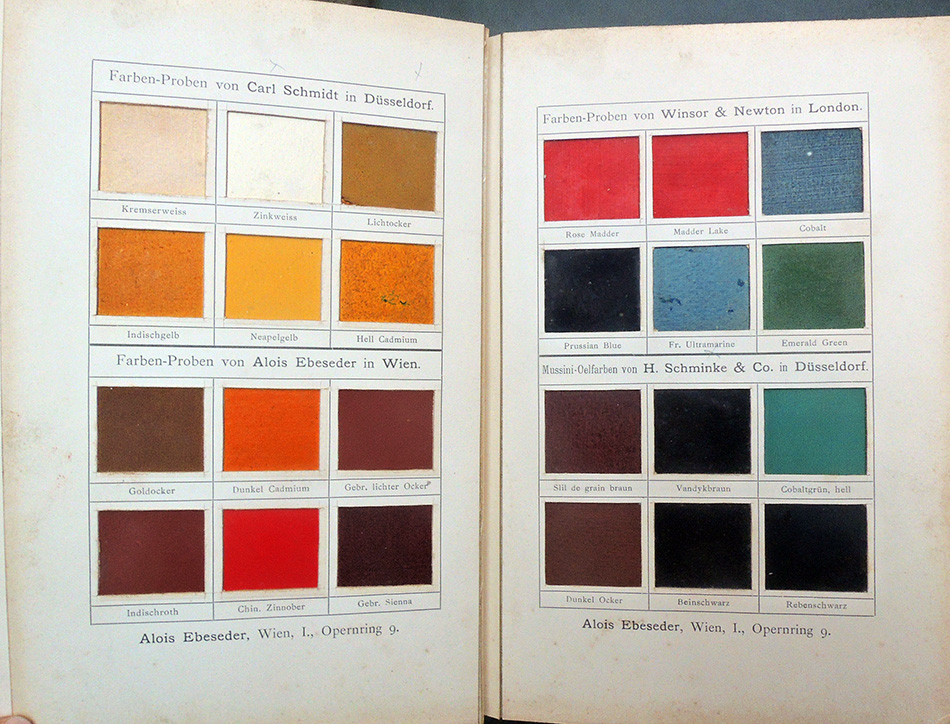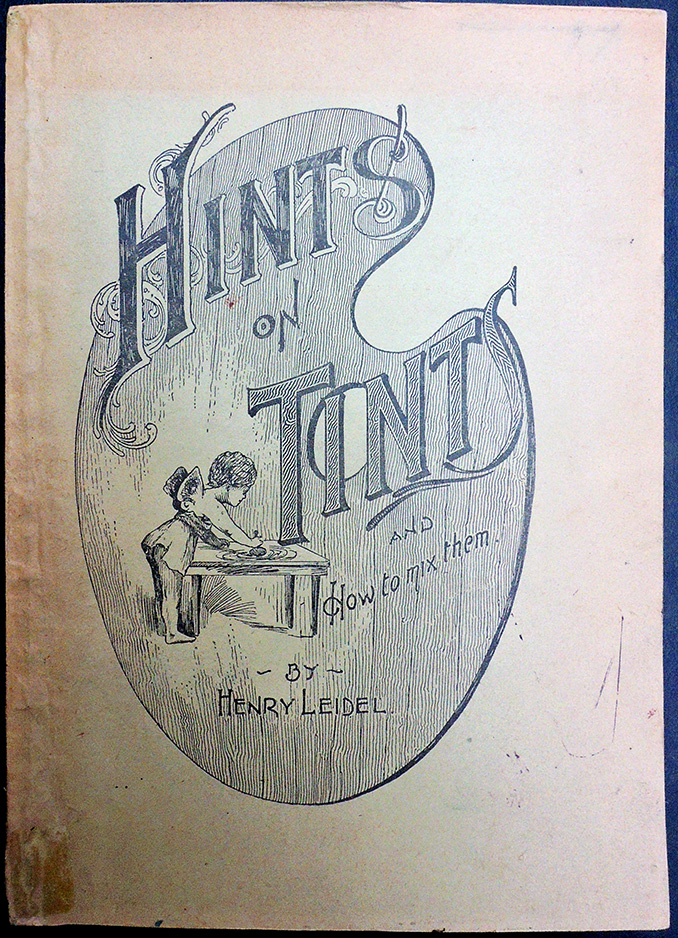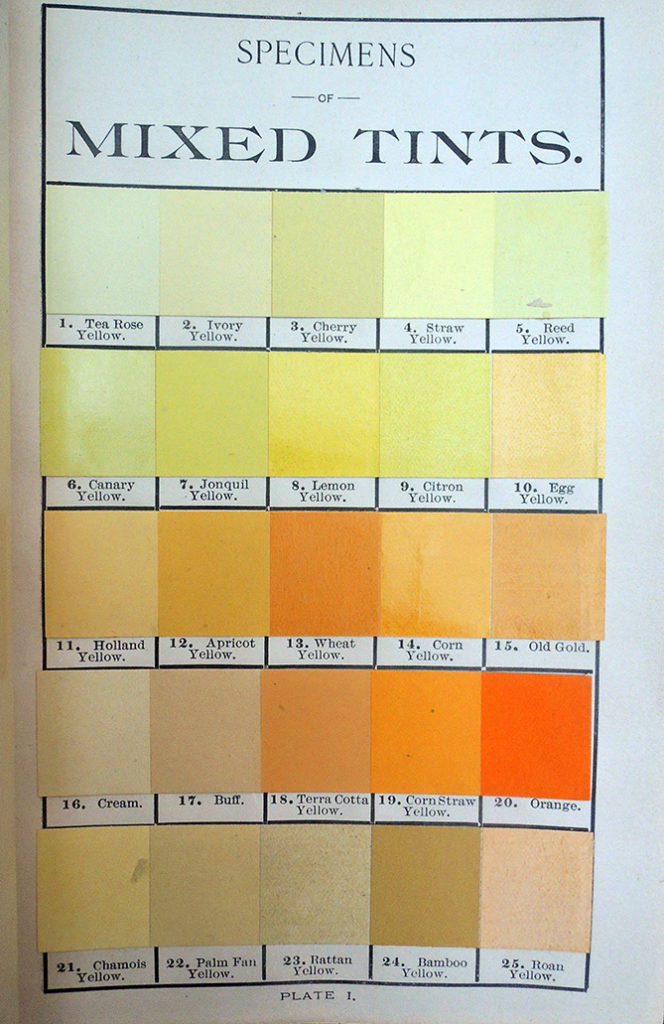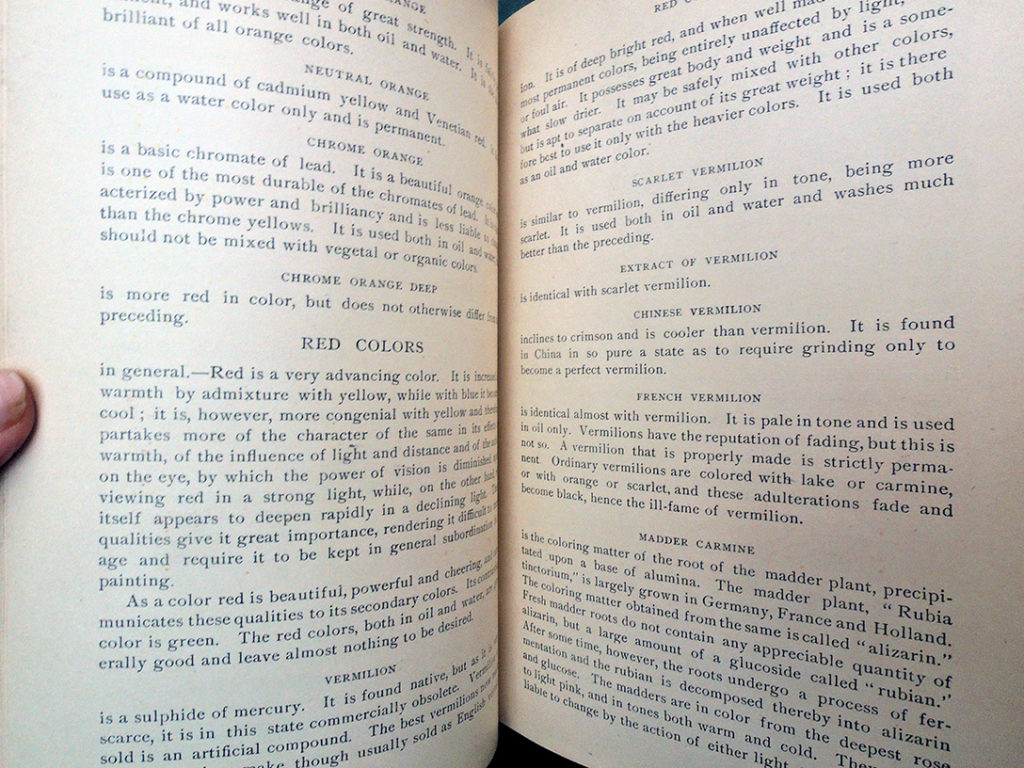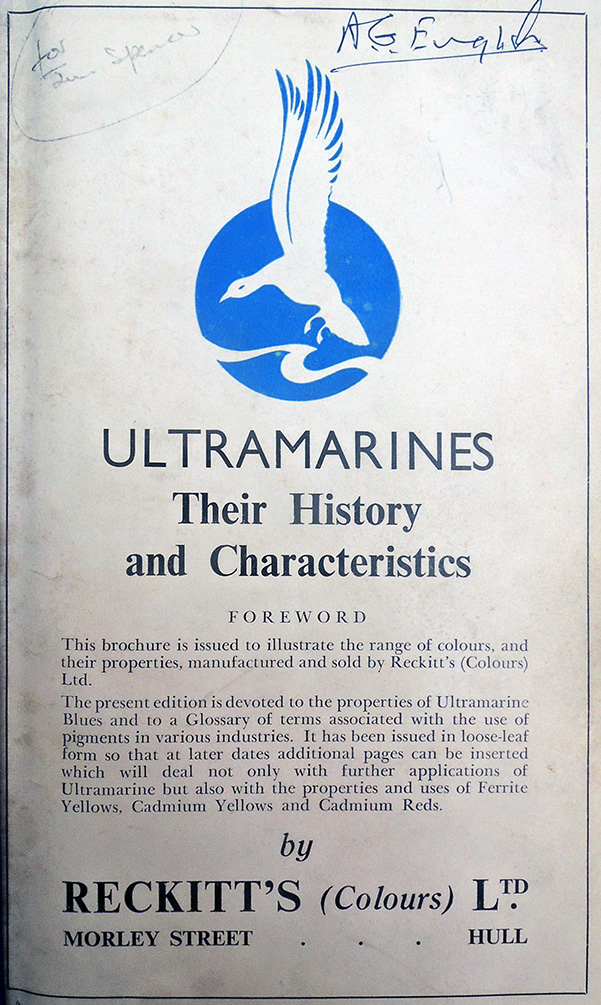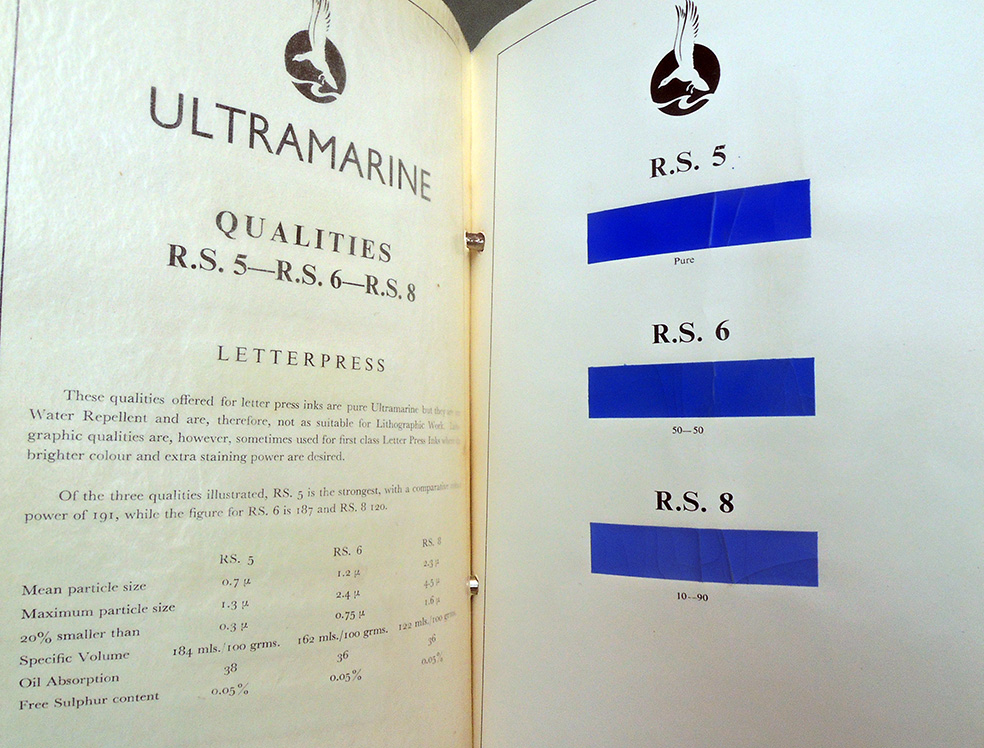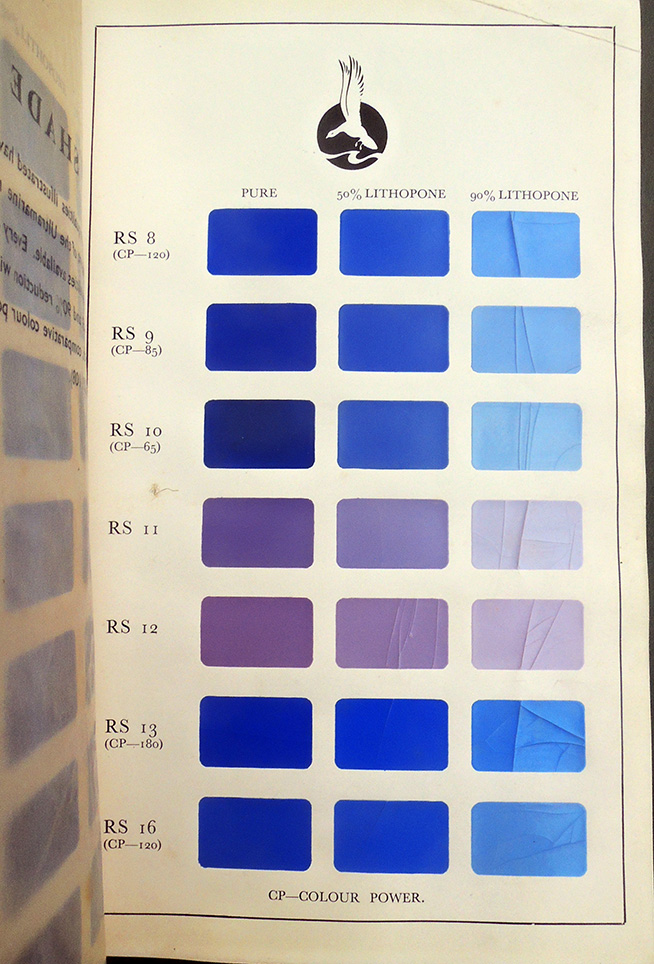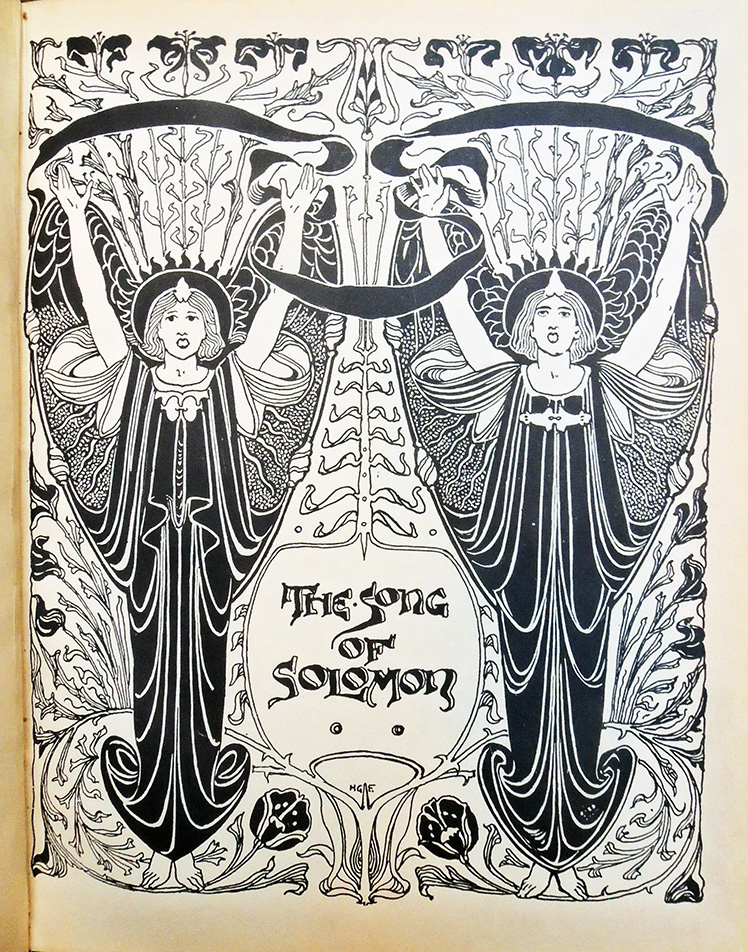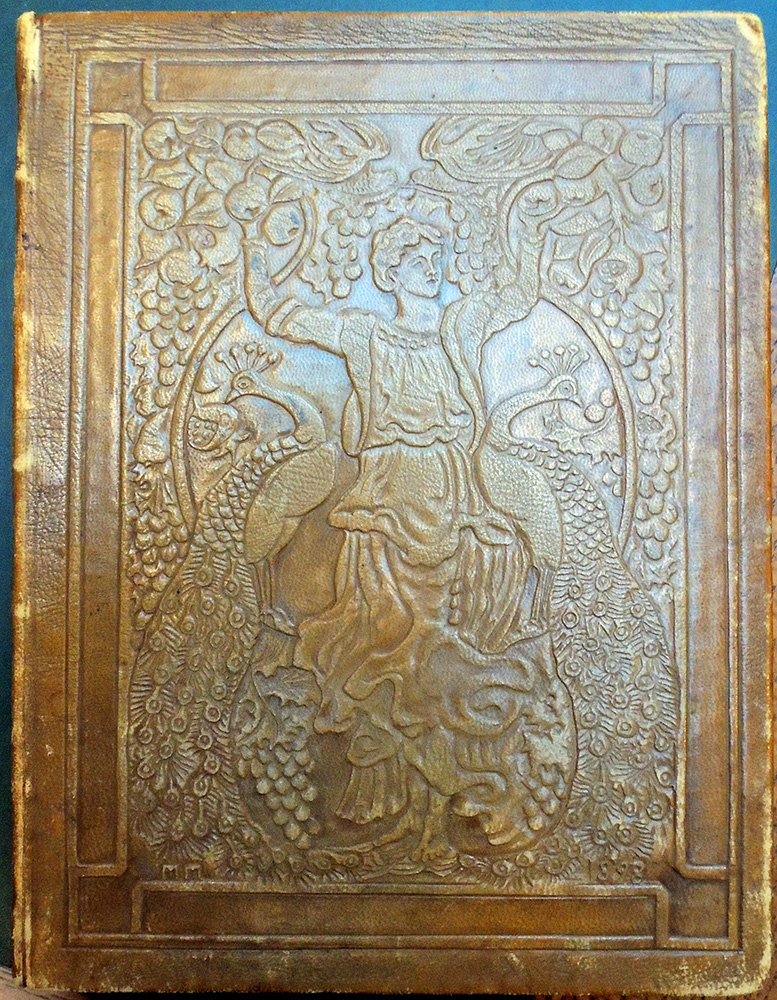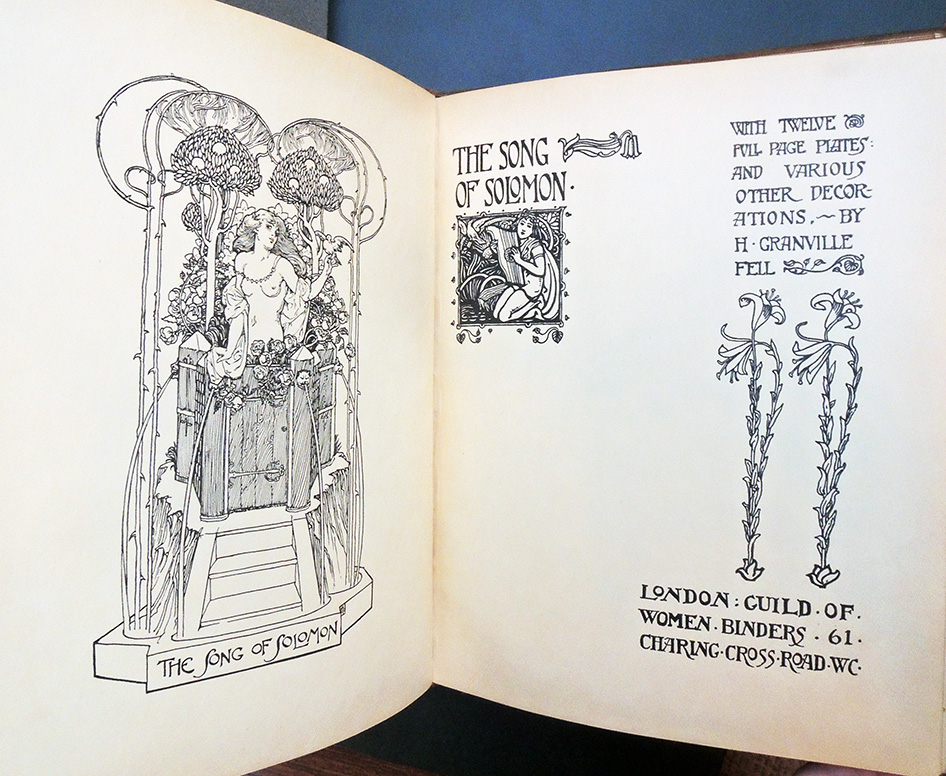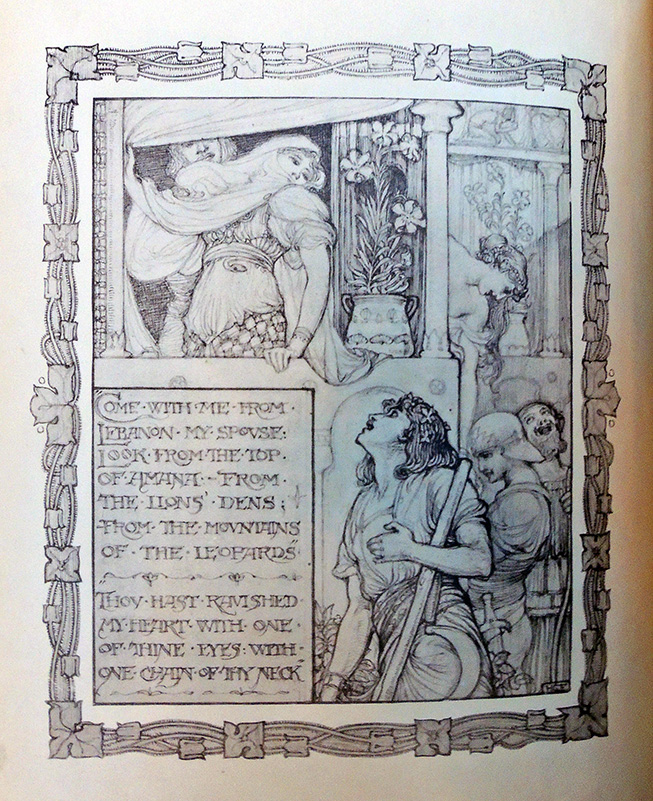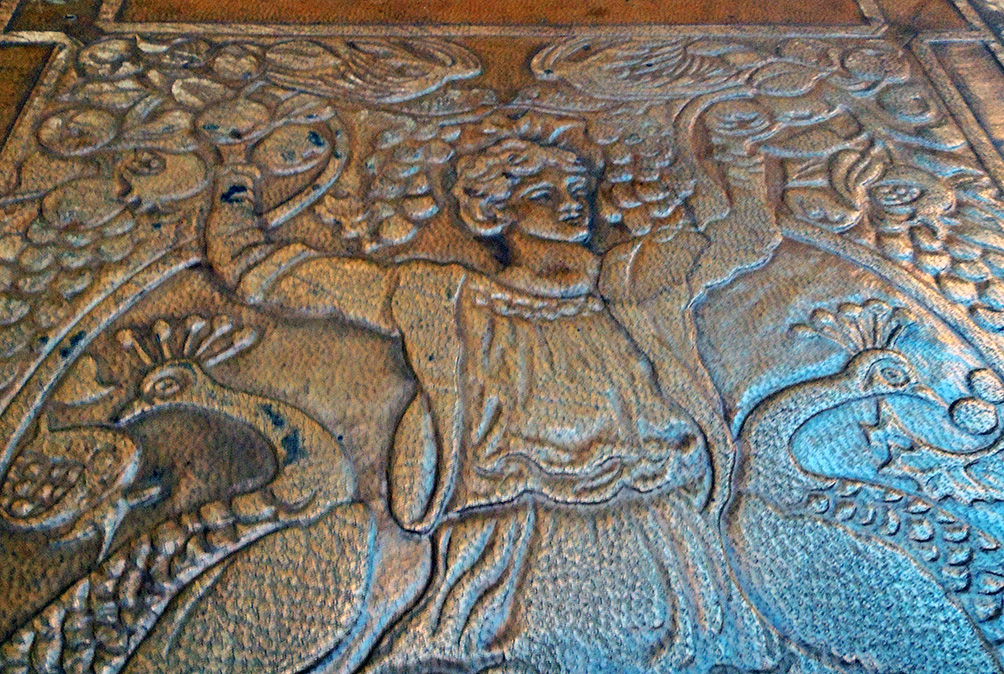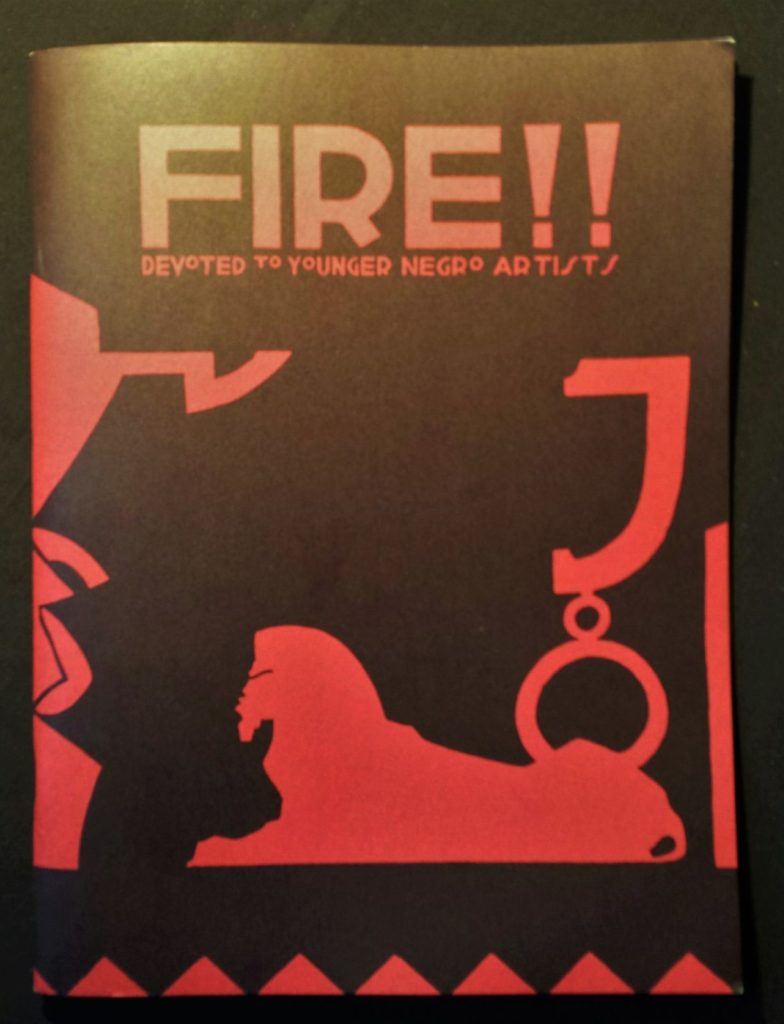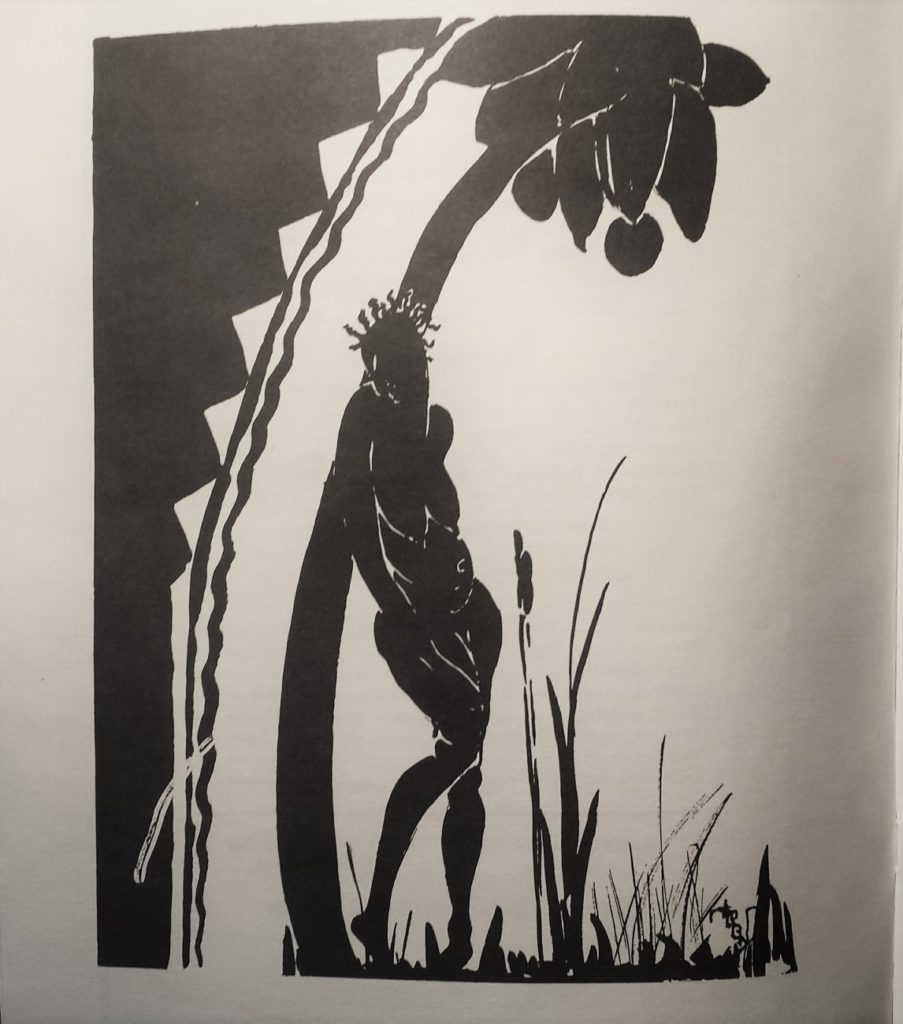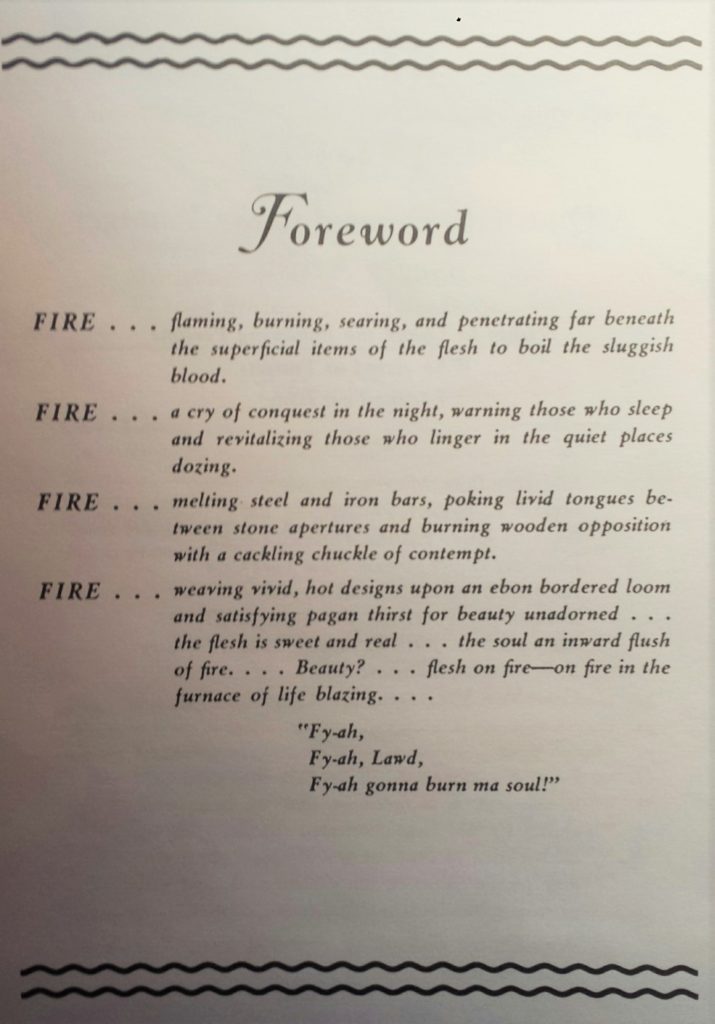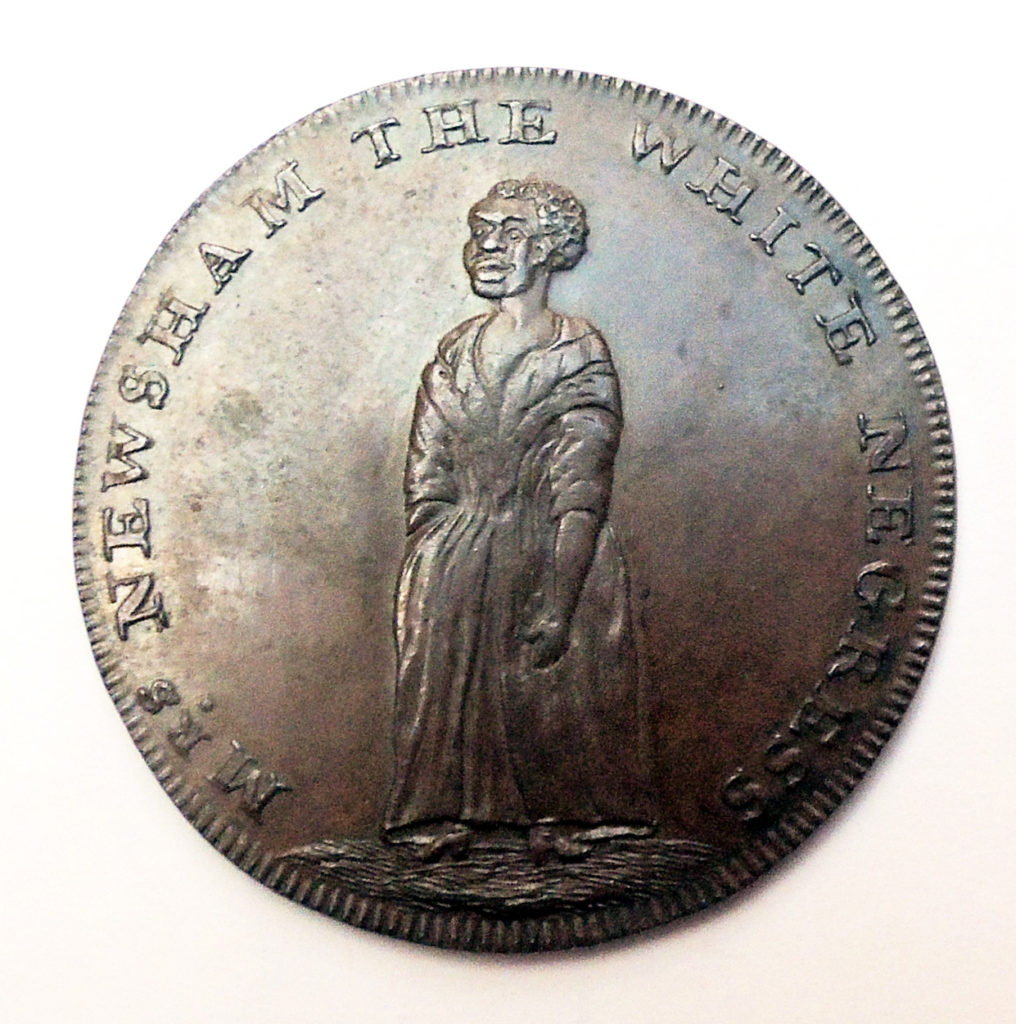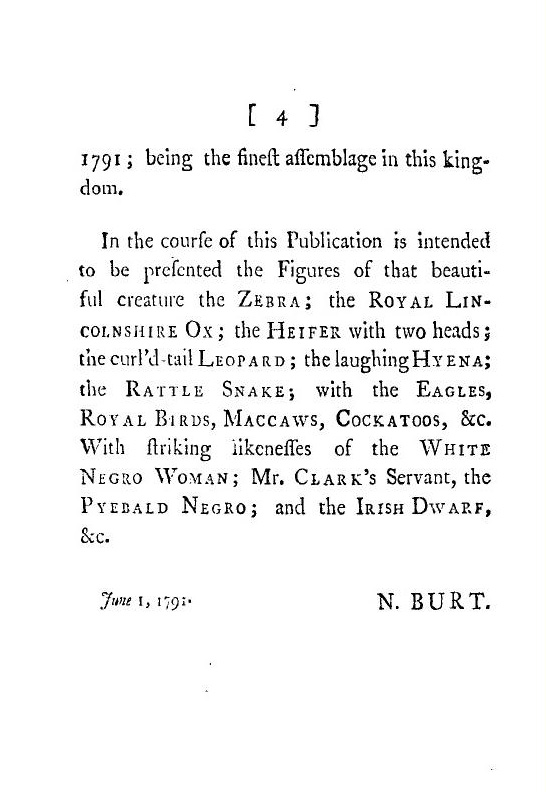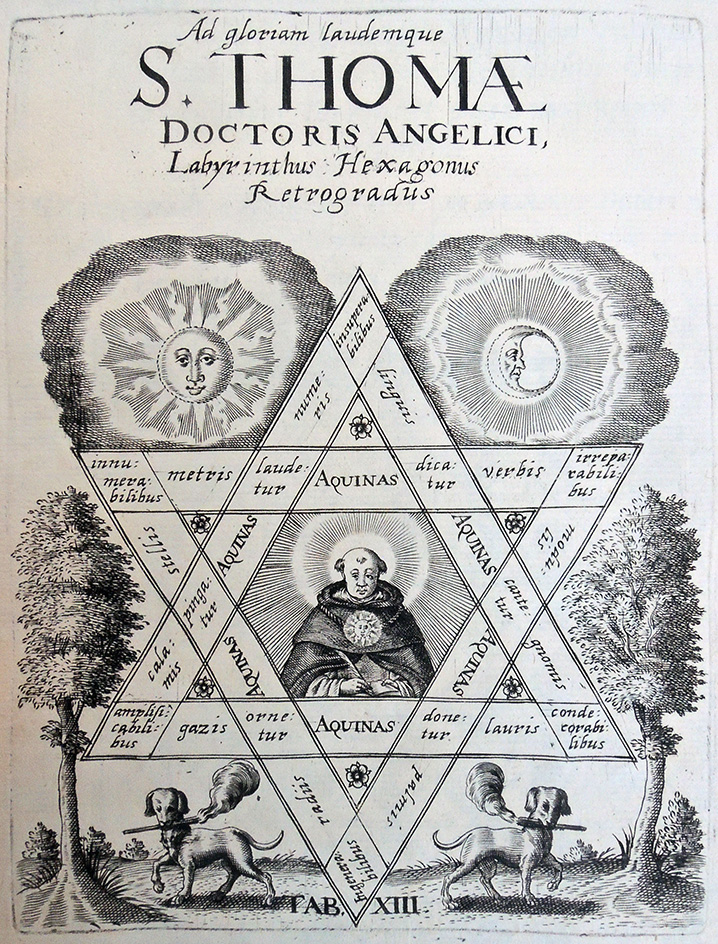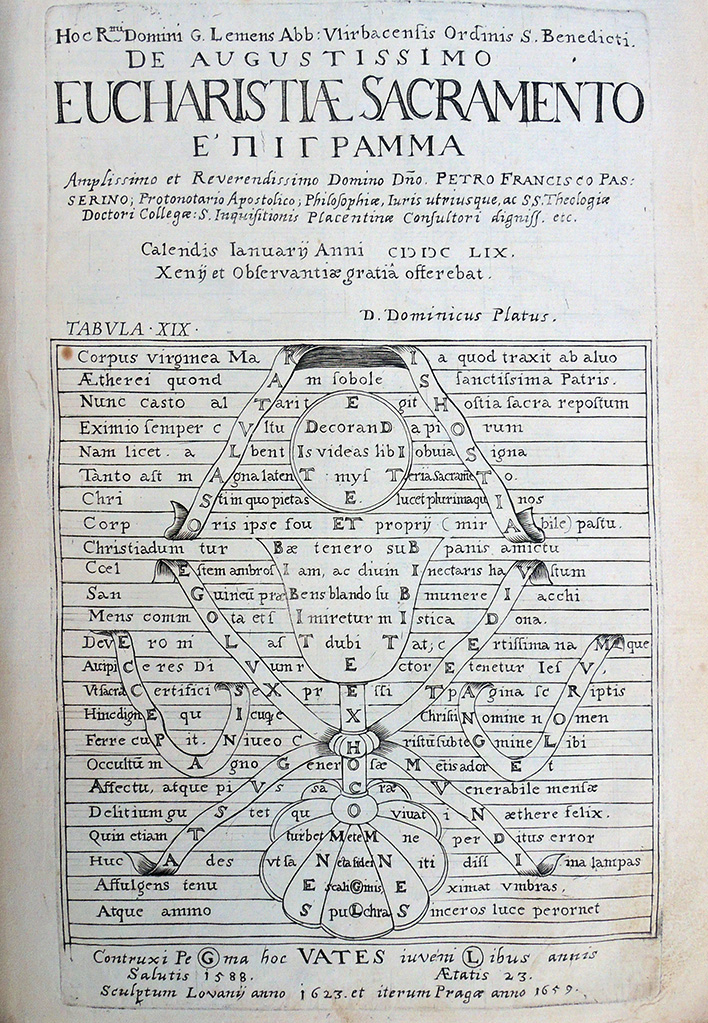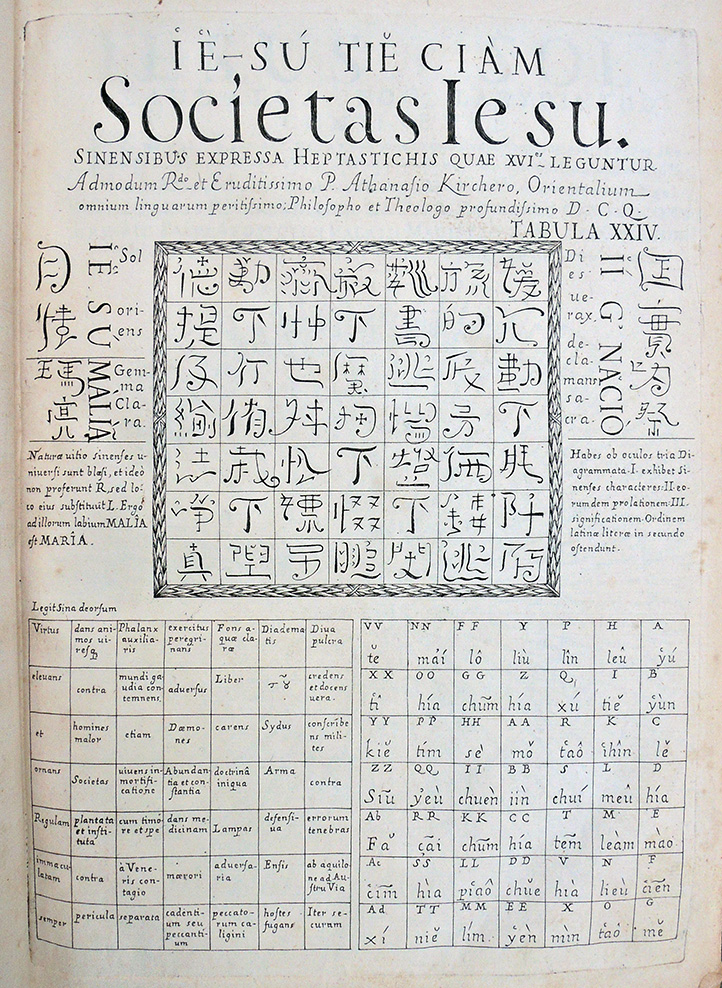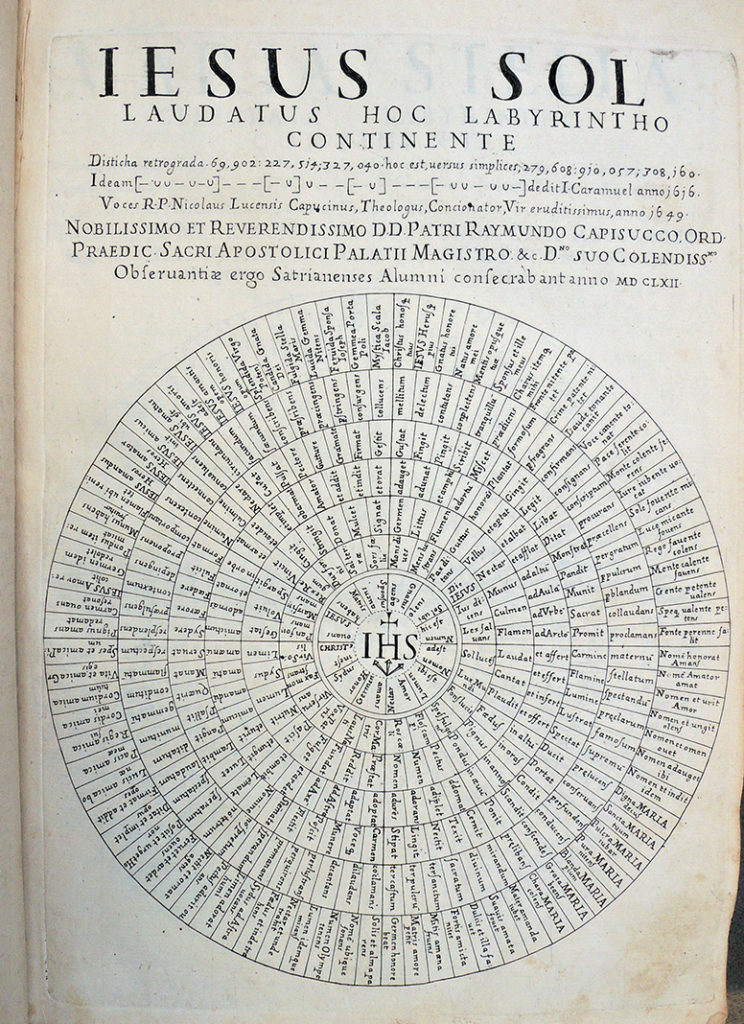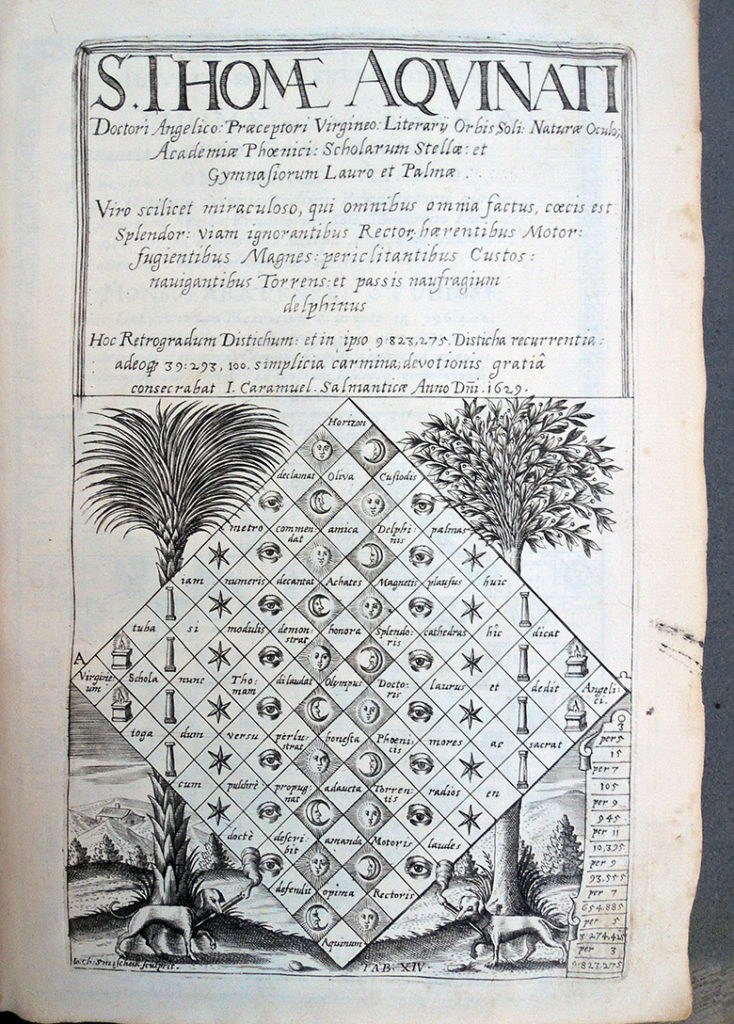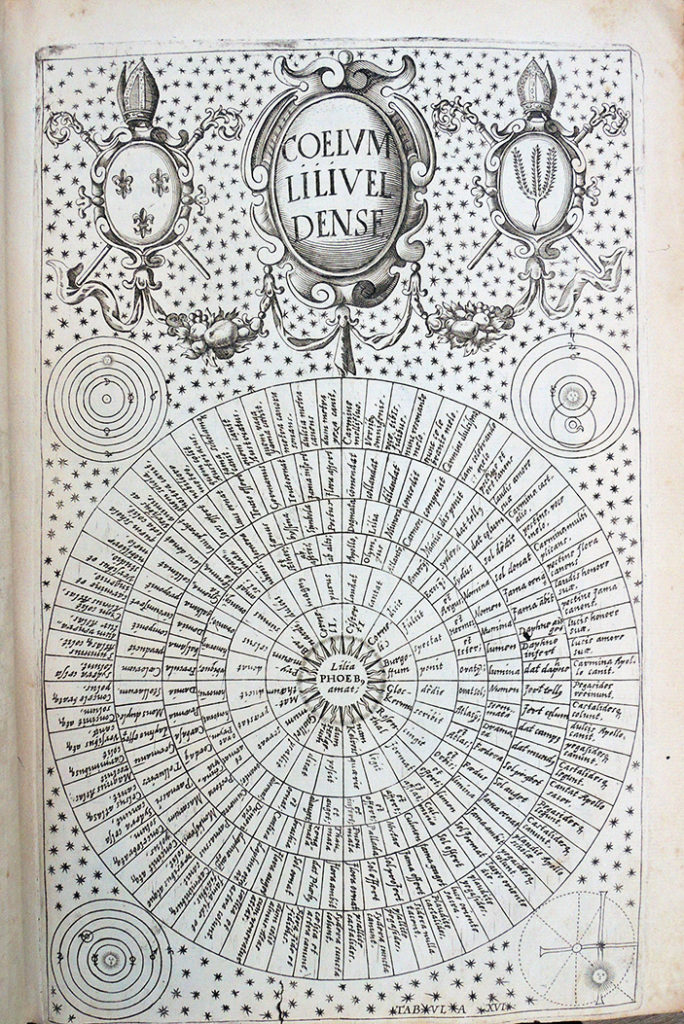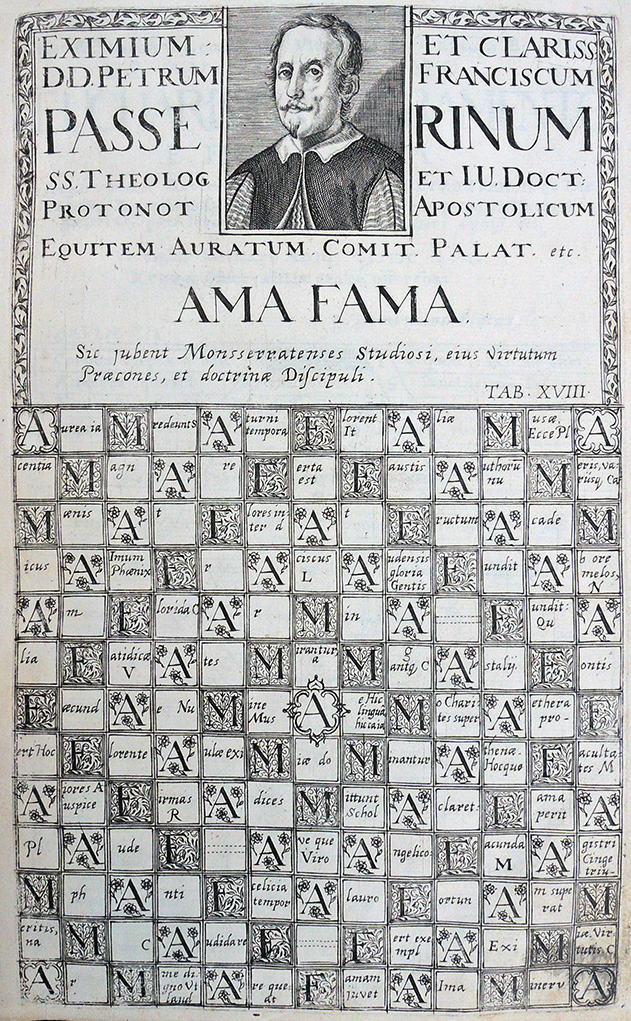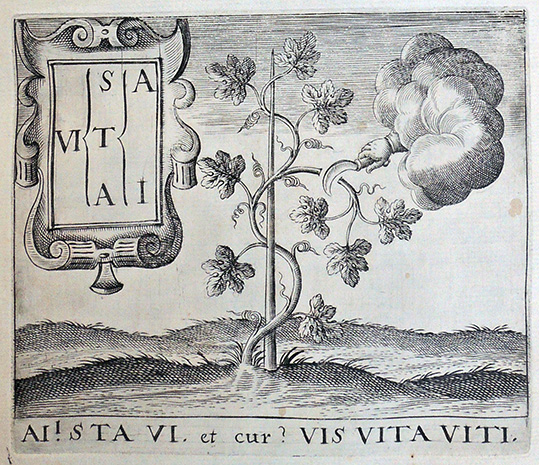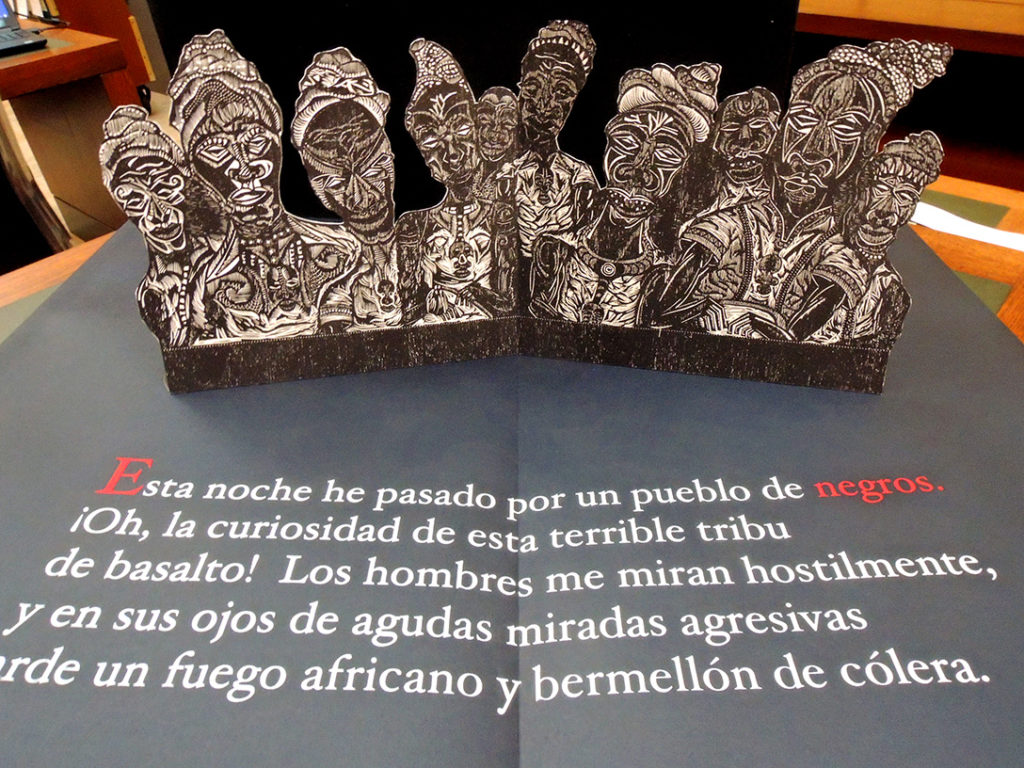 Luis Palés Matos, Esta Noche He Pasado; xilografías Raquel Noemi Quijano Feliciano (San Juan, Puerto Rico: Taller El Polvorín, 2003). Copy: No. 6. Graphic Arts Collection Oversize 2006-0076E
Luis Palés Matos, Esta Noche He Pasado; xilografías Raquel Noemi Quijano Feliciano (San Juan, Puerto Rico: Taller El Polvorín, 2003). Copy: No. 6. Graphic Arts Collection Oversize 2006-0076E
One of the items pulled for a visit by the students in “Arts & Activism in Puerto Rico,” an intersession immersion trip organized through Princeton’s Pace Center for Civic Engagement, was Esta Noche He Pasado (2003), a three-dimensional artists’ book designed, printed, and constructed by Raquel Quijano Feliciano with poetry by Luis Palés Matos (Graphic Arts Collection Oversize 2006-0076E).
We tried translating the text (Tonight I Have Passed) as we turned the pop-up pages but the poetry is rich and lyrical, with multiple layers and serious word play, such as “He Pasado” meaning he both passes through the black town and “passes for” black.
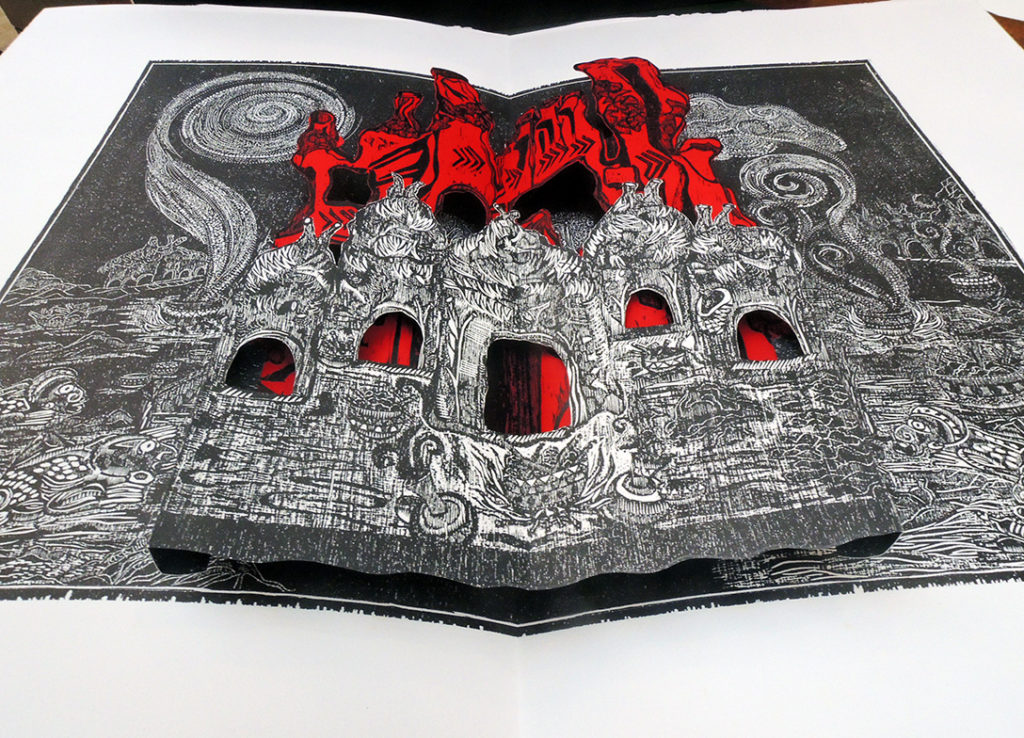
A translation was attempted by Julio Marzan in The Numinous Site: The Poetry of Luis Palés Matos (Fairleigh Dickinson University Press, 1995). Here are a few lines:
No! La pompa jocunda de estas tribus ha muerto.
Les queda una remota tristeza cuadrumana,
Una pasión ardiente por los brazos alcohols,
El odio milenario del blanco, y la insaciable
Lujuria de las toscas urgencias primitivas.
No! The cheerful pomp of those tribes has died.
All that remains is a remote four-hooved sadness,
A sweltering passion for strong liquor,
An ancient hatred of whites, and the unsated
Indulgence of raw, primitive drives.
Ante este pueblo negro y estas casas de podre
Y esta raza ya hundido para siempre, yo tengo
La vision de espantosos combustibles; la brea,
El diamante, el carbon, el odio y la montaña…
Before this black town and these houses of pus
And this race now sunken forever, I visualize
Spontaneous combustibles; tar,
Diamond, carbon, hatred and the mountain.
Printmaker Raquel Quijano began her studies in 1993 at the workshops of Liga de Estudiantes de Arte de San Juan and received a B.A. in Graphic Arts at Escuela de Artes Plásticas de San Juan in 2003. Quijano is now a professor at the Liga de Estudiantes de Arte, while also teaching at the Centro para el Grabado y las Artes del Libro de Puerto Rico http://www.puertadetierra.info/noticias/biblio/centro_grabado.htm.
Founded by Consuelo Gotay in June 218, the Center for Engraving and Book Arts of Puerto Rico is located in the renovated Carnegie Library (Biblioteca Carnegie) in San Juan. https://www.facebook.com/GrabadoPR/. It will be one of the spaces you will visit if you are lucky enough to attend Puertográfico 2020 the first week of April, under the auspice of the Southern Graphics Conference https://www.sgcinternational.org/puertografico-2020/
“El libro … fue impreso en el Taller El Povorín de la Escuela de Artes Plásticas de Puerto Rico en Mayo del 2003. La encuadernación tipo acordeón de este libro ‘pop up’, fue confeccionada en cartón ‘acid free’. Las ilustraciones son Xilografías originales impresas en papel Rive BFK y Classic Linen. El texto fue realizado con tipografía digital Hoefler text transferida a fotoserigrafía.”–Colophon


